In this article, I am going to share with you how you can do a B2B SEO Audit for any website using the right SEO checklists to ensure you don’t miss anything!
This B2B SEO Audit is divided into 6 sections that represent important types of SEO that are the foundation of every proper B2C and B2B SEO strategy.
And for each section, I am going to give you some of the important SEO techniques that you should implement. However, there will be more, to every section that you should implement. Therefore, you should take this as a guideline on how you should do a B2B SEO audit.
With that, let’s get started with the SEO checklist for B2B SEO audit:
Section #1: Keyword Checklist
The first section of the B2B SEO audit is to run through the keyword checklist.
By targeting keywords, you will be able to bring your B2B target audience to your website that is looking for your products or services or could be I in the future.
That’s why proper B2B keyword research is important to find the most important and related keywords in your niche and industry in order to create brand awareness and generate SEO leads.
To learn everything you need to know about B2B keyword research, I recommend you to check out my guide, as I’ll explain everything that is in this section and more with greater details and more examples.
With that, here are some of the best practices for keywords:
Practice #1: Targeting Keywords Across All Stages Buyer Journey
The first important keyword practice that I want to mention in this B2B SEO audit is to ensure you are targeting keywords across all stages of the buyer journey.
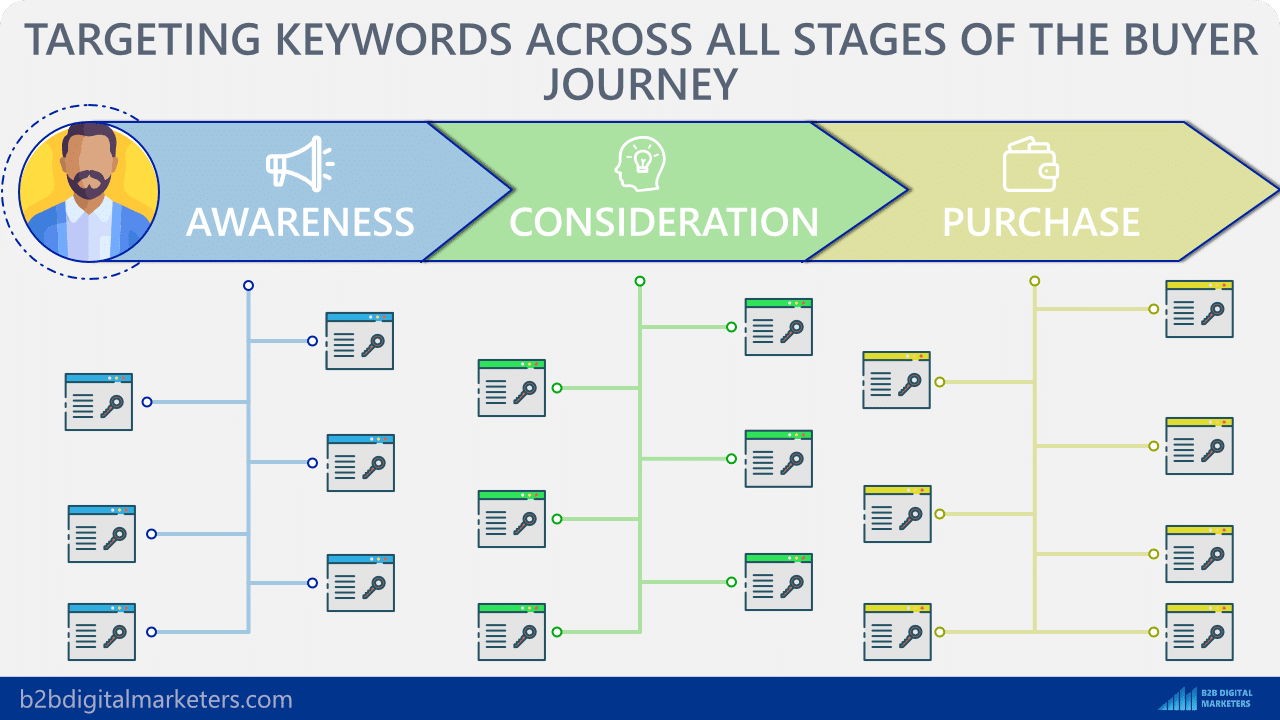
As described by Gartner, the B2B buying process has changed and your sales reps have roughly 5% of a customer’s time during their B2B buying journey due to the availability of quality information through digital channels. This has made it far easier for buyers to gather information independently, meaning sellers have less access and fewer opportunities to influence customer decisions.
That’s why it’s important to target keywords across all stages of the buyer journey because customers who perceived the information, they received from suppliers to be helpful in advancing across their buying jobs were 2.8 times more likely to experience a high degree of purchase ease, and three times more likely to buy a bigger deal with less regret.
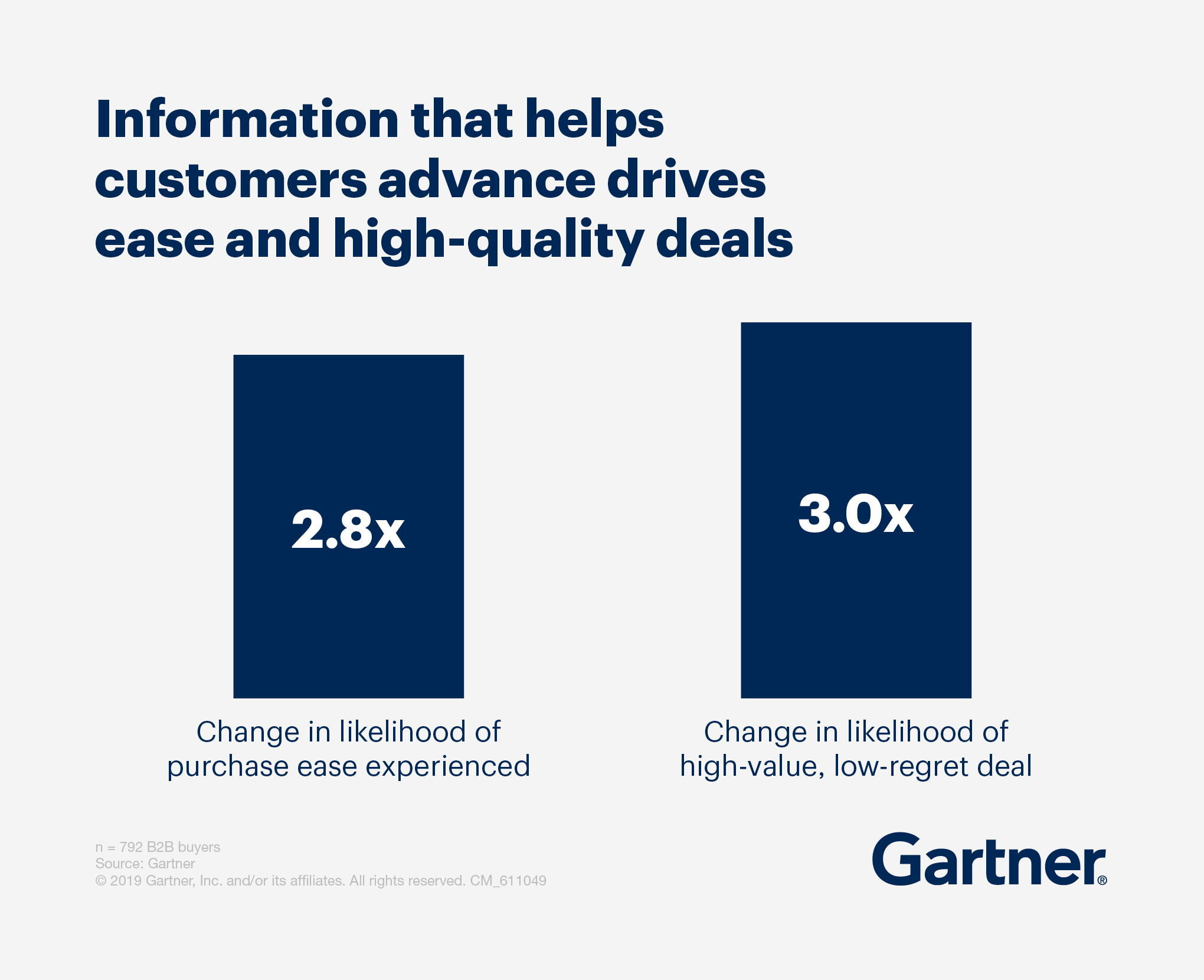
For example, here you can see a simple B2B buying journey when somebody is searching for CRM software.
As you can see, it starts with information content, then commercial content to understand what is available on the market that fits his needs and budget, and lastly transactional content when he is ready to make a purchase or go for a free trial.

So, like this, you can ensure you are targeting informational keywords to drive brand awareness for your brand and products or services as well as profitable keywords to bring MQLs from your SEO strategy.
And, in order to target keywords across all stages of the buyer journey, you’ll need to understand the search intent. About the search intent, I’ll talk about it more later on.
Practice #2: Targeting All Important Related Topic Clusters
The next important keyword practice for the B2B SEO audit is to ensure you are targeting all your relevant topic clusters related to your products or services.
Topic clusters mean you clustering your content into an informational architecture on your website based on keywords that are closely related to your products or services, niche, and industry and it is a big part of a Semantic SEO.

Creating topic clusters will further help you to target keywords across all stages of the buyer journey, but more specifically to each of your product or service
For example, if you are selling project management software, then you will want to create a topic cluster around the topic of project management.
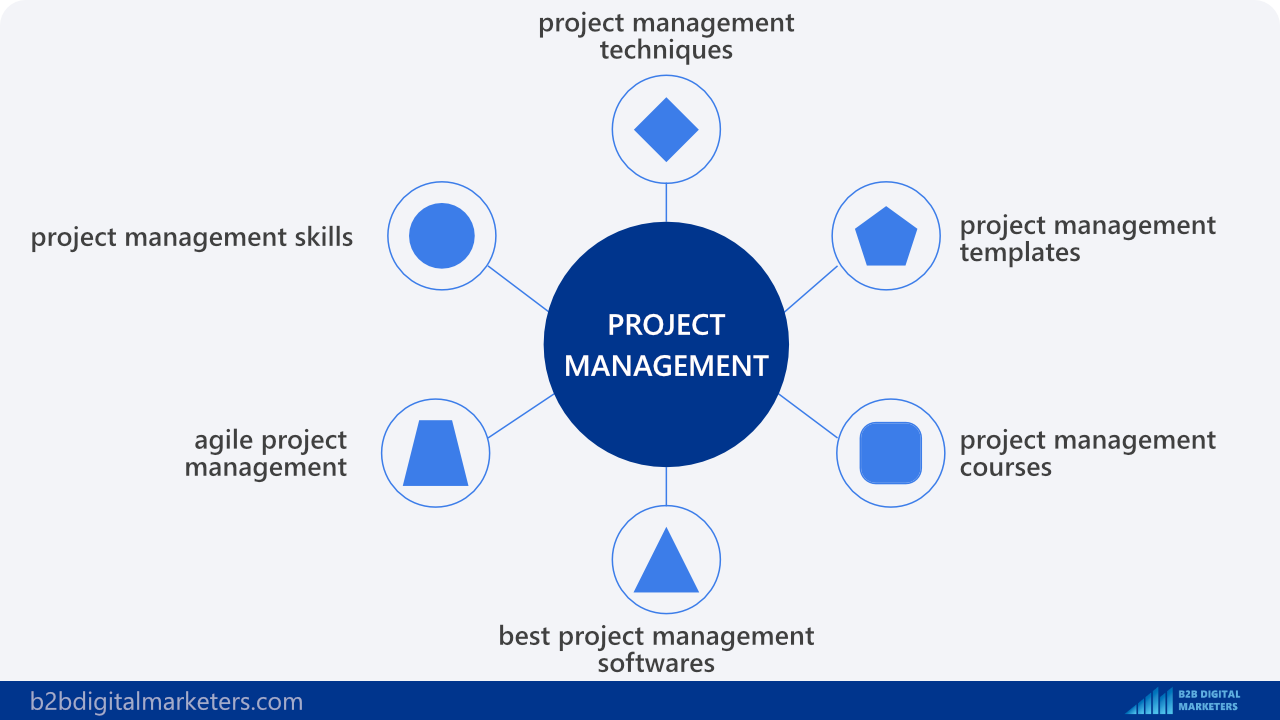
And to do that, you can see keyword research tools such as SE Ranking.
Just pop your seed keyword in the SE Ranking Keyword Research tool, in my case it is “project management”, select your target location and click on “Analyze”.
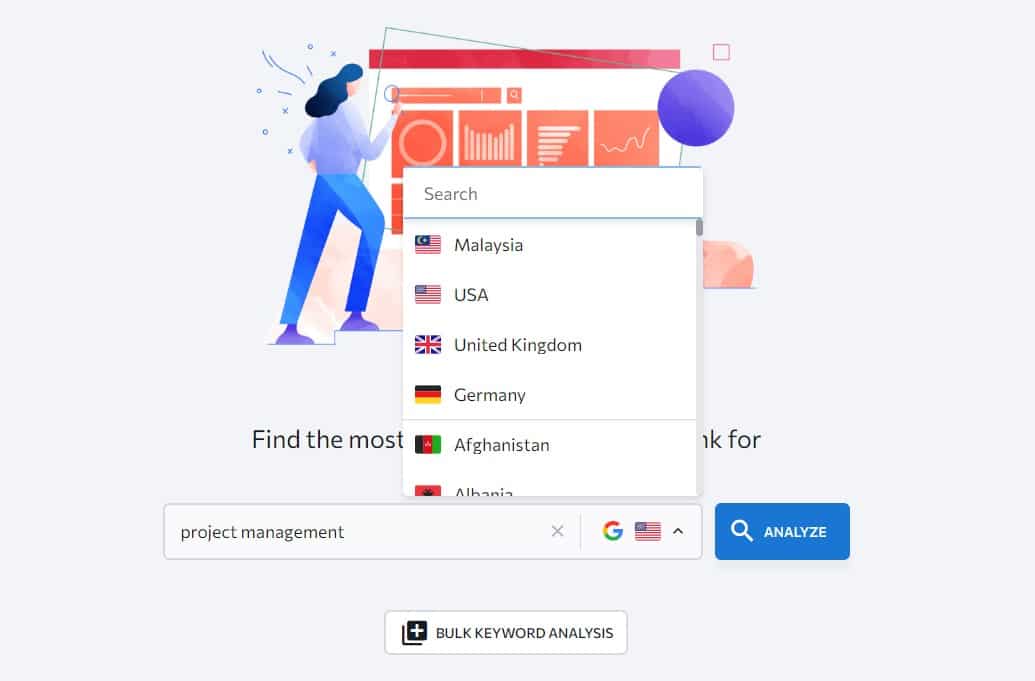
Here I get a high-level overview of the analyzed keyword. So now, I go to the “Keyword Suggestions” report in the left sidebar.
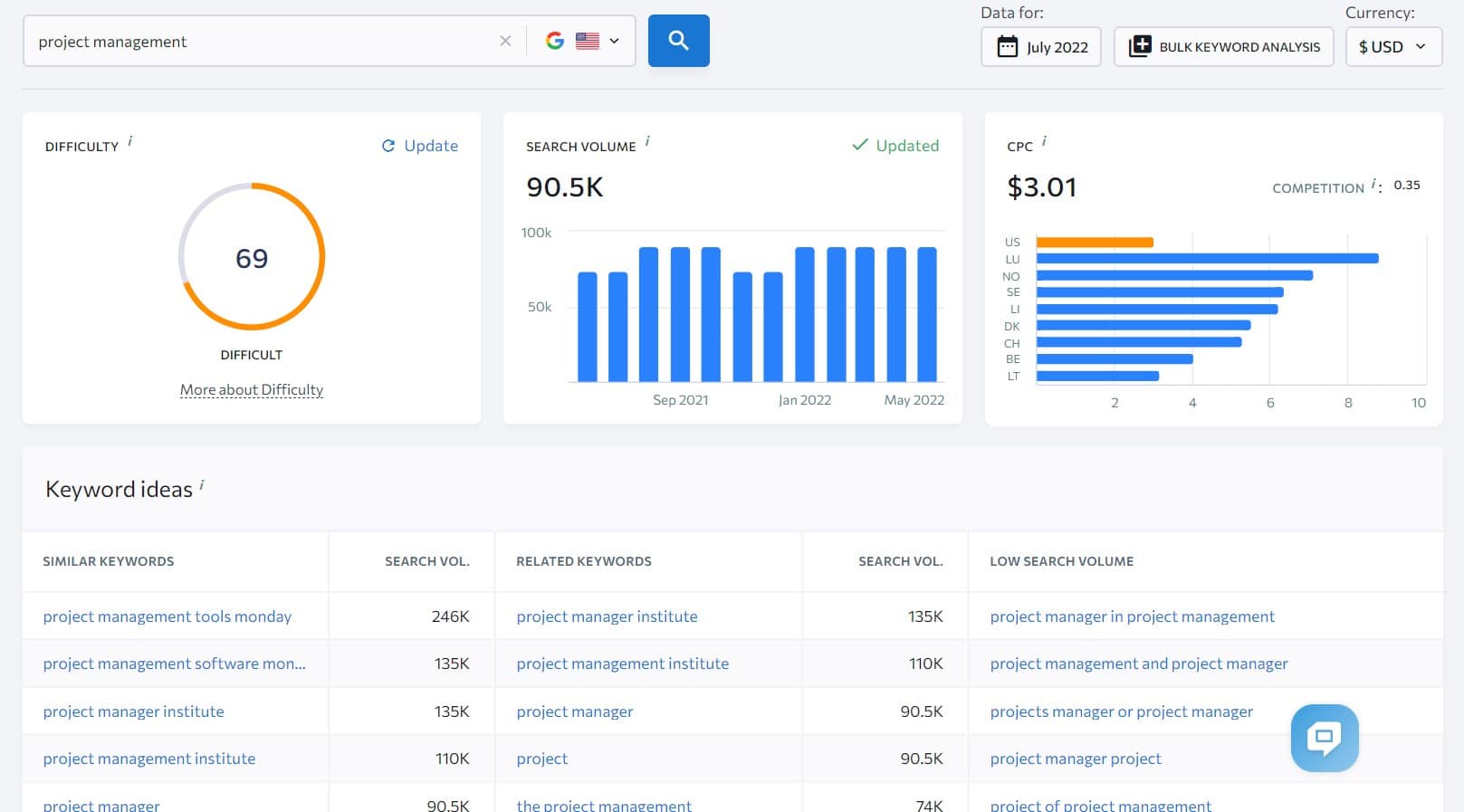
And here I will scan both “Similar” and “Related” keyword reports finding any related subtopics to the main topic.
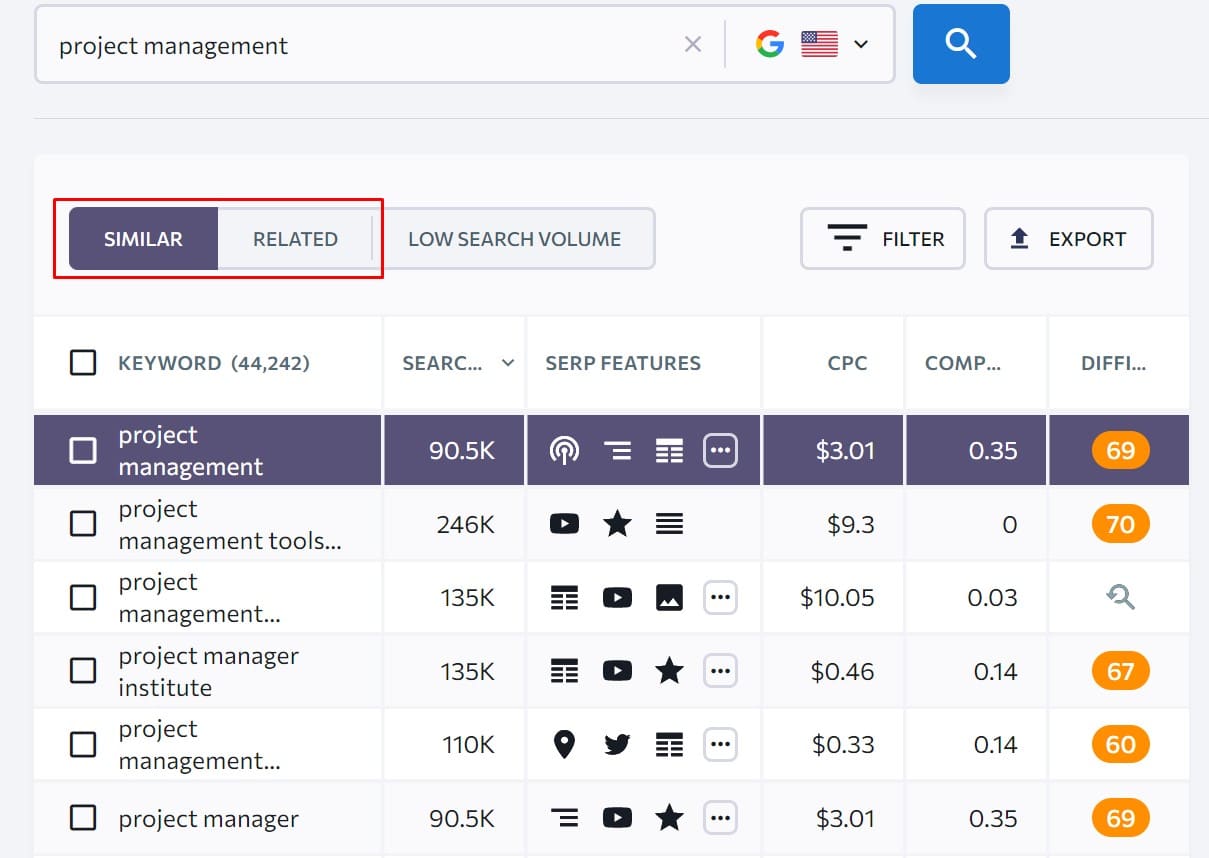
So, like this, you can create any topic cluster that is related to your products, services, niche, or industry.
Because, by targeting keywords from your topic cluster, you will build topical authority and relevancy for your website so you can rank those keywords in top positions in SERPs.
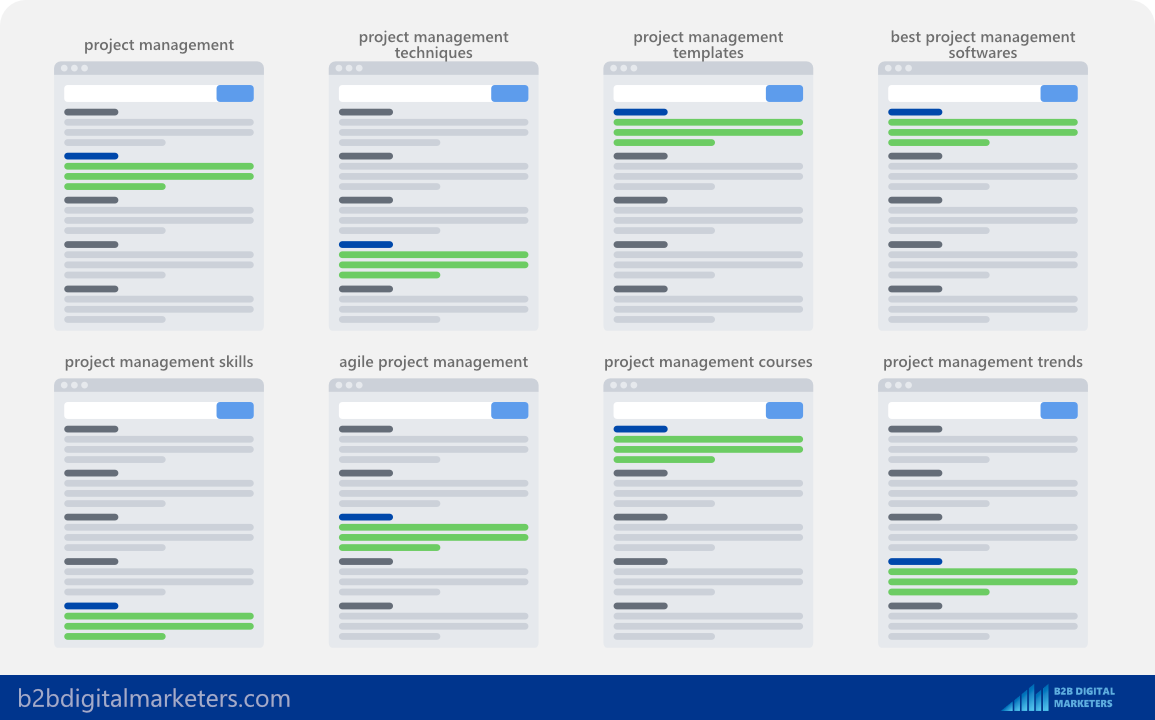
That’s why when you are doing a B2B SEO audit, ensure you check if you are targeting keywords from related topic clusters to your business. The goal is to be super focused on your related and most important topic and cover as many subtopics to create strong topical authority.
Practice #3: Targeting Low Competition Keywords
And the last important keyword best practice for this B2B SEO audit is to ensure you are having a list of low-competition keywords to target.
If you are only targeting keywords from your topic cluster the chances are that you are only targeting high competition keywords, which is fine, if you are having a highly authoritative website.

If not, then besides targeting topic cluster keywords, you will also want to target low competition keywords so you can generate organic traffic and leads at the early stage of your website.
With that, there are probably millions and one way to benchmark low competition keywords for your website. However, here you have a quick, easy, and fairly accurate way to benchmark your keyword difficulty:
- Open SE Ranking Competitive Research tool and analyze your website.
- Go into the “Organic Keywords” report and add a filter for keywords ranking in positions 1-7. (This is because Google rarely displays 10 search results on the first page of Google.)
- Export all the keywords

- Calculate the average keyword difficulty score.
- Calculate the median keyword difficulty score. (Preferably use this as your benchmark value)
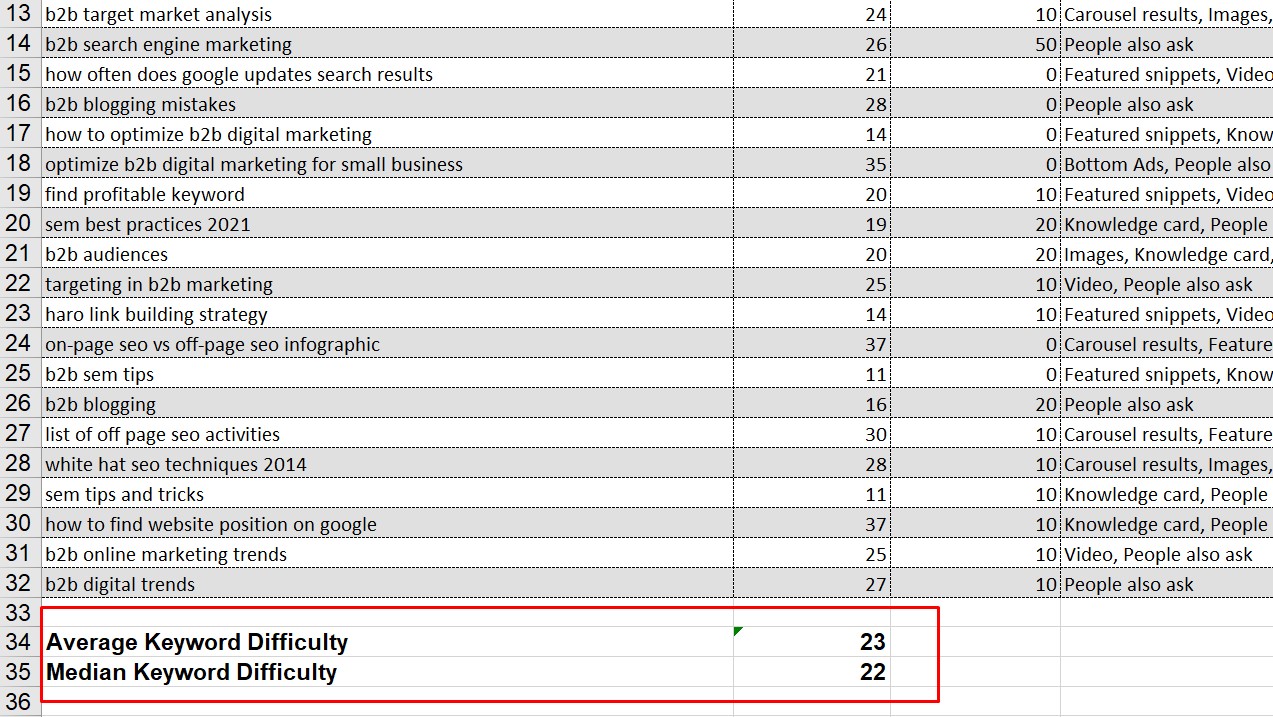
And based on this, you can see what keyword difficulty you can target and rank on the first page of Google. Thus, any keywords same or below your benchmark keyword difficulty are considered low competition keywords for you.
However, for this, you will need at least a list of 50 keywords to make it work for you. Anything below makes the accuracy of this technique poor.
Therefore, if you are not having enough ranking keywords or start a fresh new website, with 0 website authority, then target only keywords with keyword difficulty < 10, and over time, as you grow your website you can apply this technique.
Section #2: SEO Writing Checklist
The second section of the B2B SEO audit is focused on the SEO writing checklist to create SEO-friendly content.
Once you have checked your keywords and ensure you are targeting or going to target keywords based on your topic cluster and low competition keywords research to build topical authority and get some easy and quick wins for your website, then the next stage is to focus on creating SEO content.
In order to effectively target keywords, you need to create SEO-friendly content that is the right type of content for your target keyword, because if you are providing the wrong type of content, then you won’t be able to rank for that keyword.
And again, there is a lot more to SEO content, than I will show you here, so you should check out my guide to learn how to write SEO content:
However here are two most important SEO content techniques you should check when you do a B2B SEO audit.
Practice #4: Targeting the Right Search Intent
The first practice of creating SEO-friendly content is to target the right search intent for every keyword.
Search intent means the purpose of the user behind the query and what exactly they want to get from the search engines.
Actually, whenever we are searching for something, we generally know what we want, whether it is an answer to our question, a list of recommendations, finding entertainment, or any other reason.
And by understanding the search intent you will be able to map SEO keywords to the buyer journey and create the right type of content for every SEO keyword you are targeting.
In general, 99% of SEO keywords, you’ll find can be categorized into four different types of search intent:
- Informational Keywords: These keywords are used by users to find information about a particular topic, person, product, or service. Often these are the question keywords such as “What, How, When, and Why”.
- Commercial Keywords: These keywords are used by users when they want to discover available options in the marketplace and compare different solutions. Such keywords usually feature word terms such as “best” E.g “best SEO software” or “mercedes vs bmw.
- Transactional Keywords: These keywords are used by a user when they are searching to make a purchase. Such keywords feature word terms such as “buy”, “subscribe”, and “for sale.”
- Navigational Keywords: These keywords are used by users when they are searching for a company name or person or they want to navigate somewhere. These are also called branded keywords as well. For example, “SE Ranking keyword research tool” or “Facebook login”.
And to recognize the search intent behind each keyword, you look at the type of content ranking in the SERPs and the keyword modifiers used in titles.
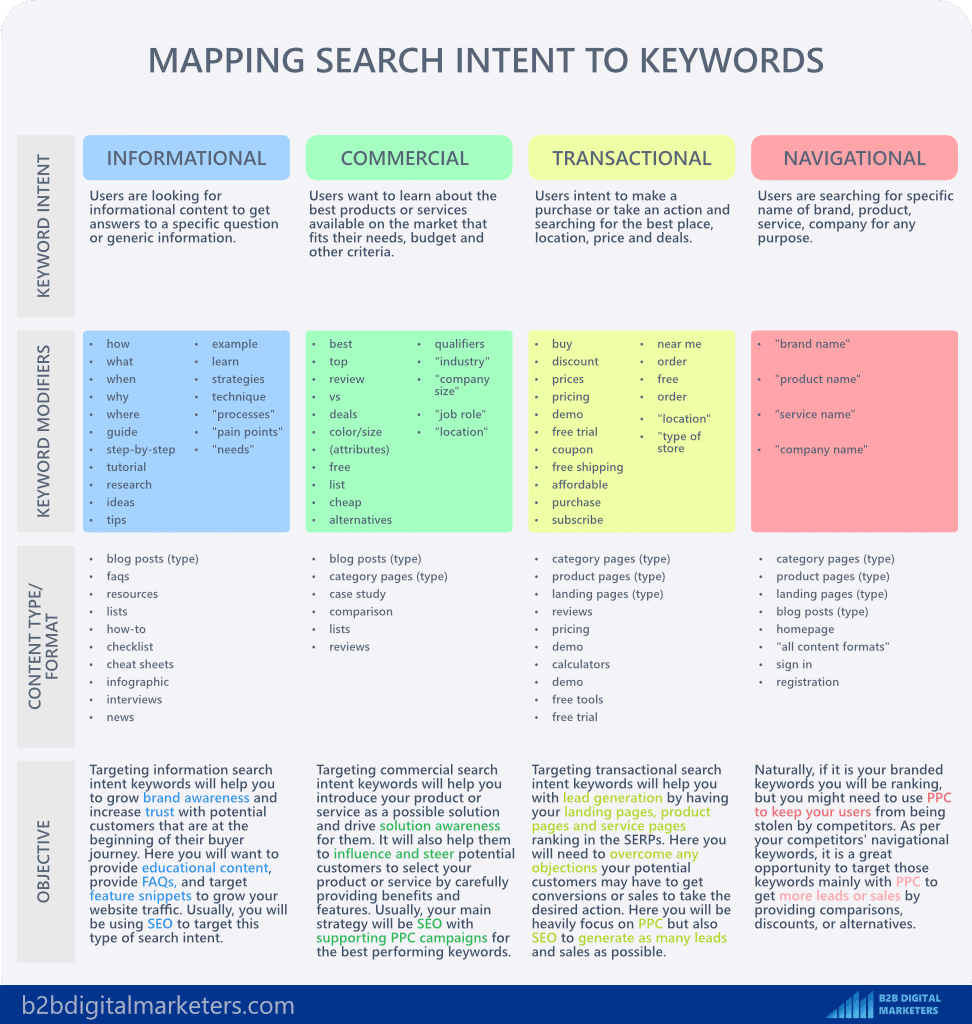
Download the full quality here.
In layman’s terms, any keyword that is heavily product or service related is often commercial or transactional, and the informational type of content is of course informational type of search intent.
With that, here you can see an infographic to help you with mapping keywords to the buyer journey:
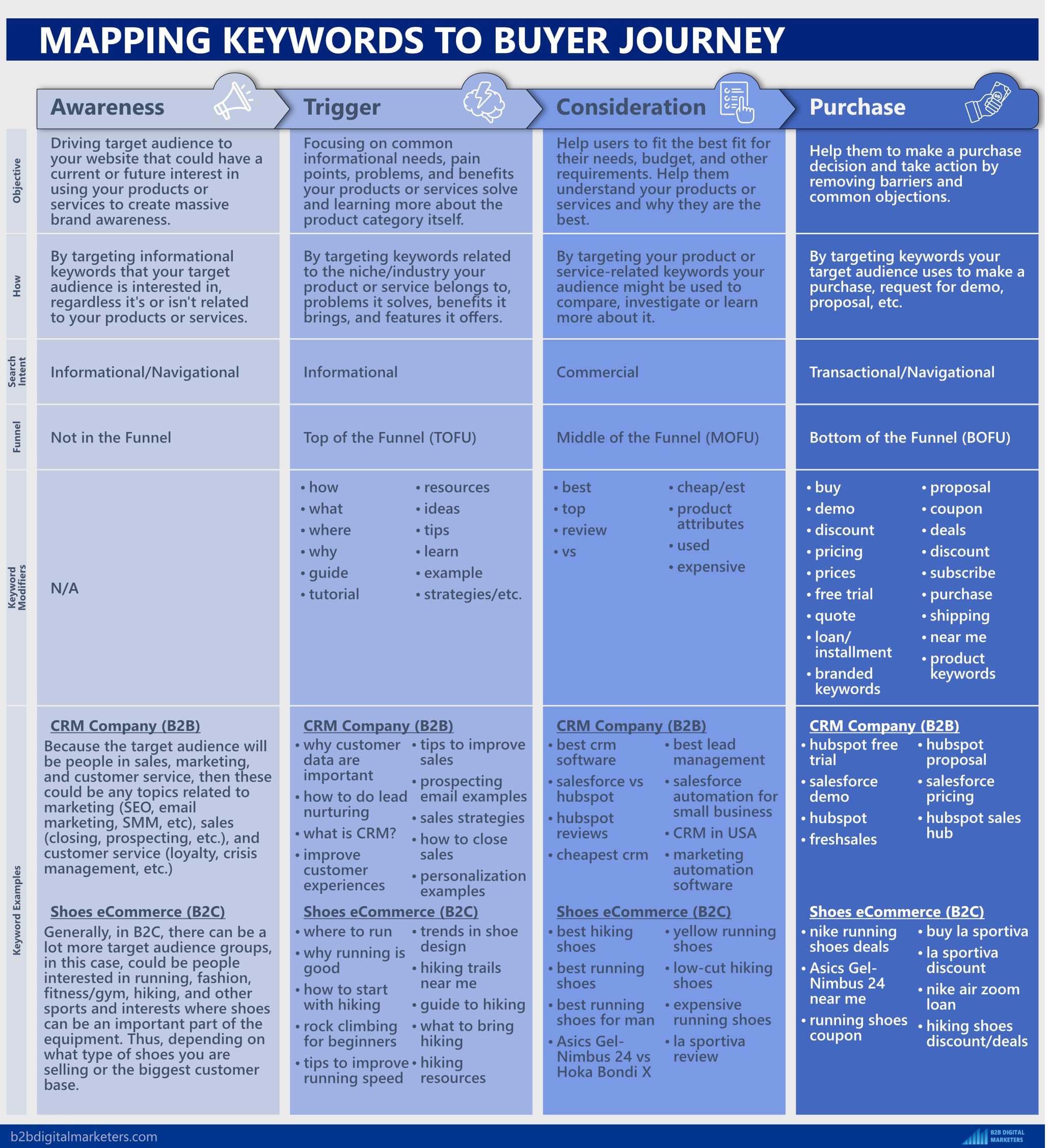
Download the full quality here.
Practice #5: Historical Optimization
And the second and very important part of SEO content creation is to do historical optimization of your old content.
Historical optimization means updating our old content to make it relevant and up to date in order to bring it back to life and increase its ranking and organic ranking.

Updating our old content is one of the best ways to quickly increase organic traffic and conversions on your website as it has been indexed in Google for a while and it built up authority, but because currently, it is old and not relevant for users, then they choose to click on it less often which resulted in loss ranking.
It’s also much easier to update old content than keep producing new content every single time, which can give you some quick and easy wins for your website.
With that, here is a crash course on how to do historical optimization:
- Find a 1+ year-old page on your website, that is used to bring organic traffic and/or conversions using Google Search Console or Google Analytics.
- Find relevant ranking keywords the page is ranking for but are not properly mentioned on the page. You can use Google Search Console or SE Ranking Competitive Research Tool, to see which keywords the page is ranking for.
- Add new sections with the relevant keywords and other important sections to the content that you think should be added to increase the value of the content.
- Update any statistics or data within the page if used.
- Optimized for on-page SEO and conversion path.
- Publish your newly updated content and make sure you change the publish date to today and pop it in Google Search Console inspect tool.
- And of course, promote your new updated content just like you would do with new content.
However, this is only if the search intent did not change, if the search intent changed, then you’ll need to create a new page just like you would normally do.
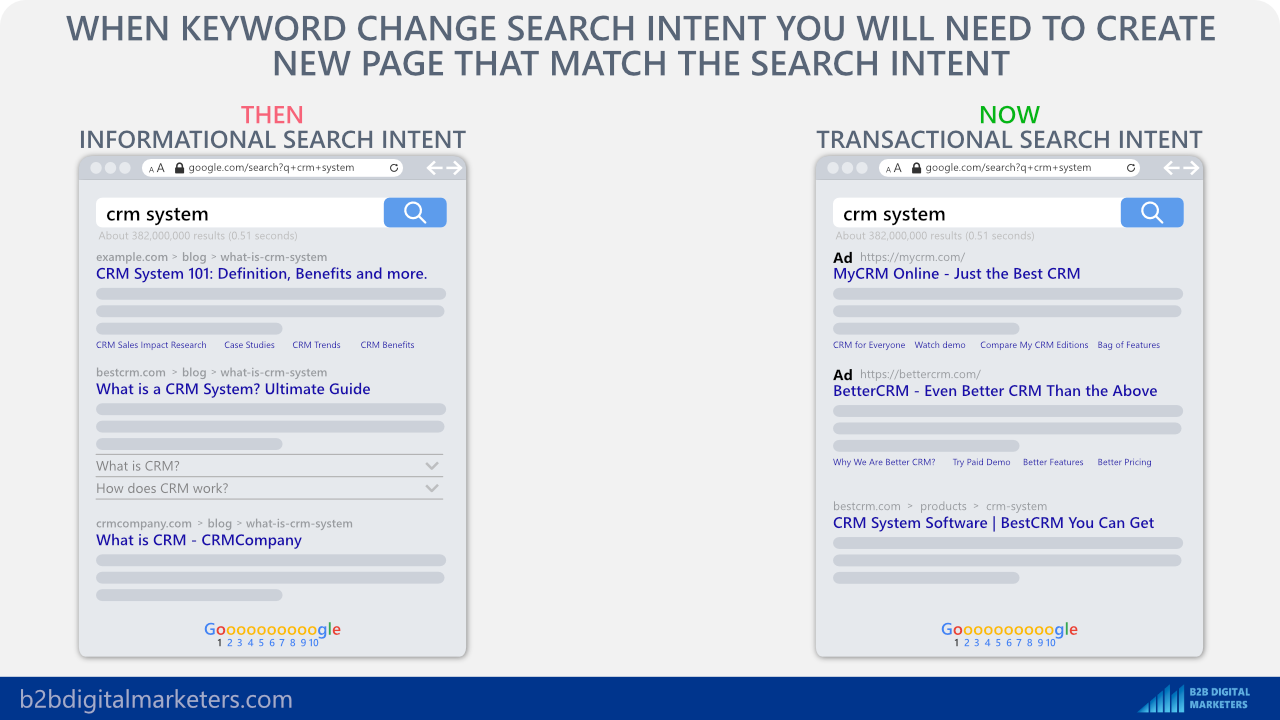
So, make sure, you are regularly auditing your content inventory for any potential historical optimization to get quick and easy traffic and conversions for your website.
If you want to learn how to properly do historical optimization, then check out my video here:
Section #3: On-Page SEO Checklist
The next section of the B2B SEO audit is on-page SEO is to run through the on-page SEO checklist.
In this section, we will focus on how you are optimizing your SEO content for on-page SEO in order to help Google better understand what’s your website about, maximize your visibility potential, and improve ranking in SERPs for your primary and secondary keywords.
And like I said, there is a lot more on-page SEO than I will mention here, so you should definitely check out my on-page SEO guide.
However here I am going to give you the three most important on-page SEO best practices that makes big difference if you implement them:
Practice #6: SEO Internal Linking Strategy
One of the most important on-page SEO best practices is to ensure you are focusing on a proper SEO internal linking strategy for your website.
Internal links are a fundamental part of every SEO strategy as they can help you easily boost your search visibility, increase ranking for the most important pages, increase user experience metrics, and even your SEO lead generation.
And it is one of the easy-to-manipulate Google ranking factors used by agencies when they are doing SEO audits to get quick and easy wins.

And the reason why internal links are so powerful and can improve so much about your website is that Google uses internal links in many different ways such:
- Google uses internal links to better understand the importance of the page by looking at the number of internal links.

- Google uses internal links to better understand what’s the page about by looking at the anchor text of incoming internal links.

- Google pass link juice via internal links, so you can easily spread your link juice across your website and pages that have fewer backlinks to boost your overall ranking.
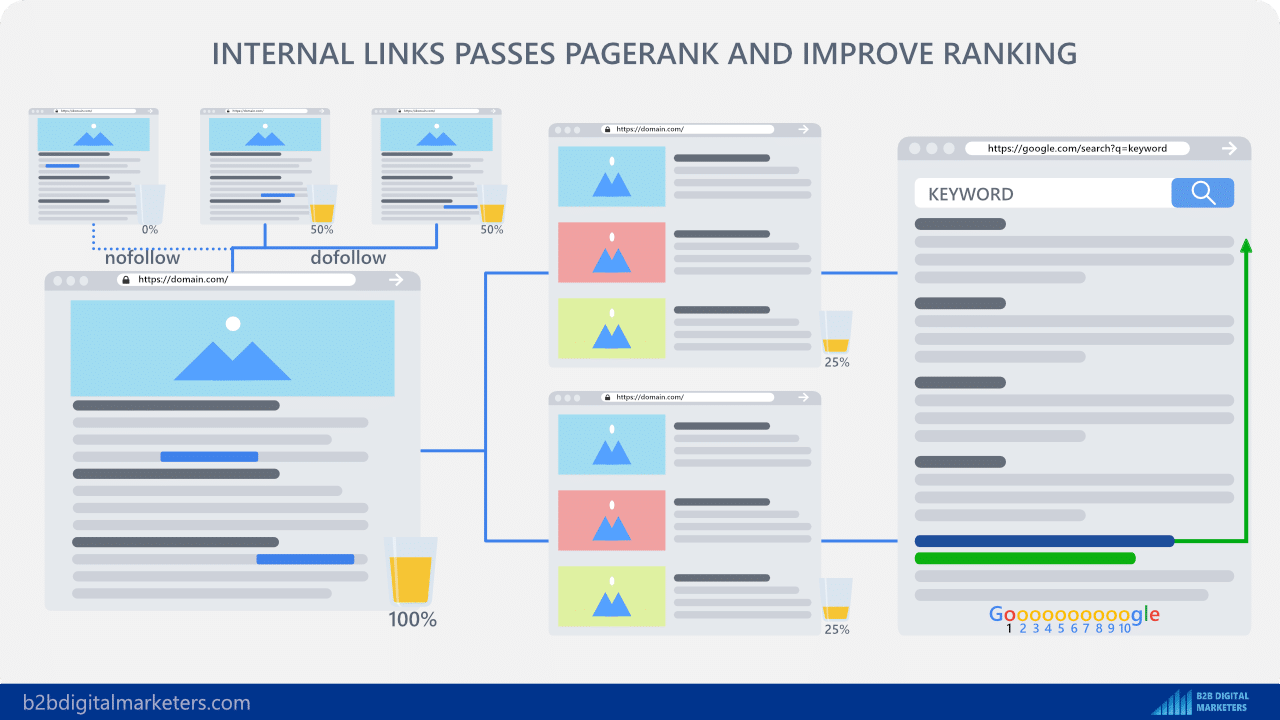
- Google’s main technique to crawl and discover website pages is by crawling internal and external links.

Not only that, but with internal links, you can easily tackle common on-page SEO and technical SEO issues such as:
- You can easily lower your page depth to the recommended depth between 1-3.

- You can remove orphan pages or a silo of orphan pages by adding internal links.
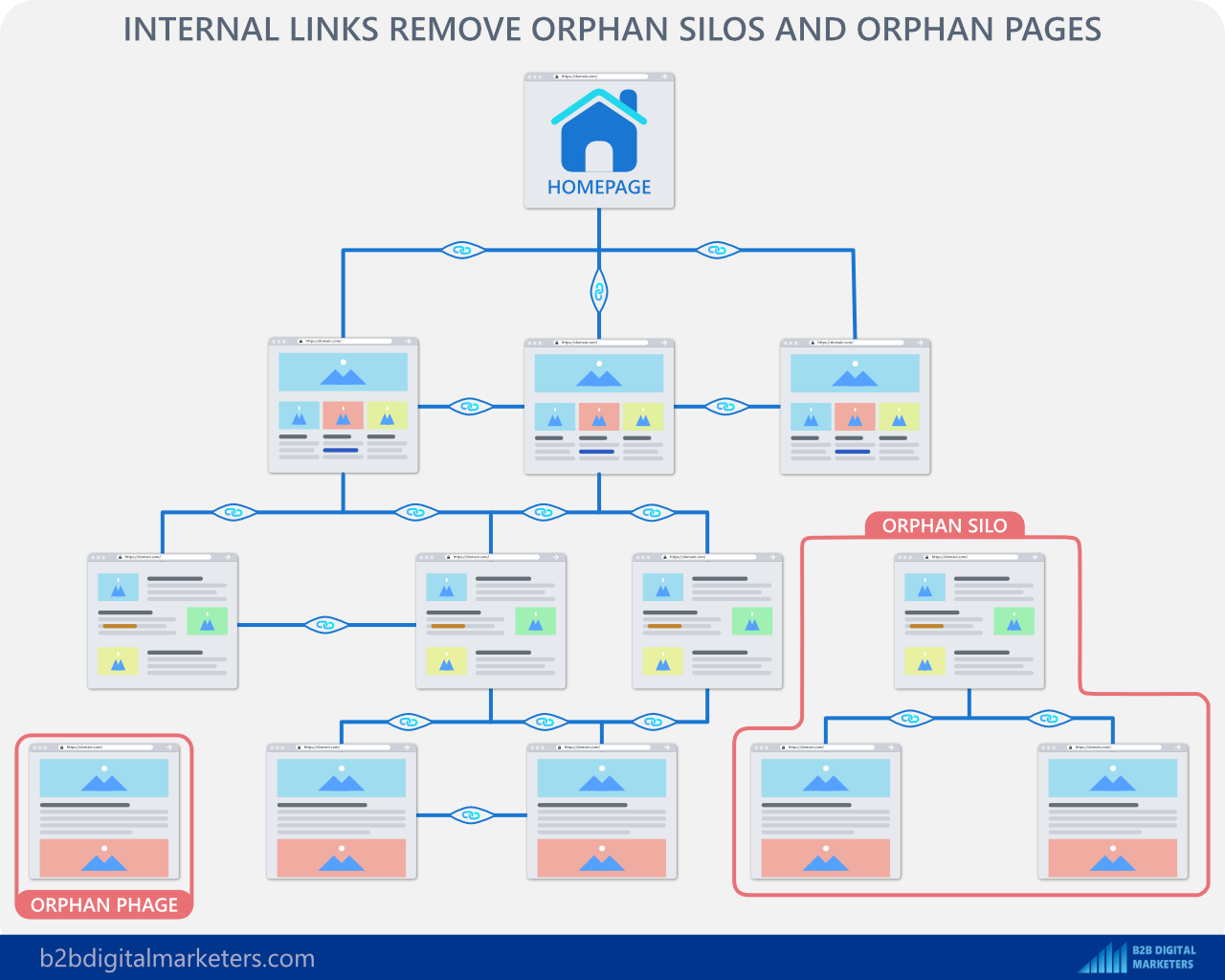
With that, here are some of the internal linking best practices for SEO:
- Fully optimize your topic clusters for SEO internal links.
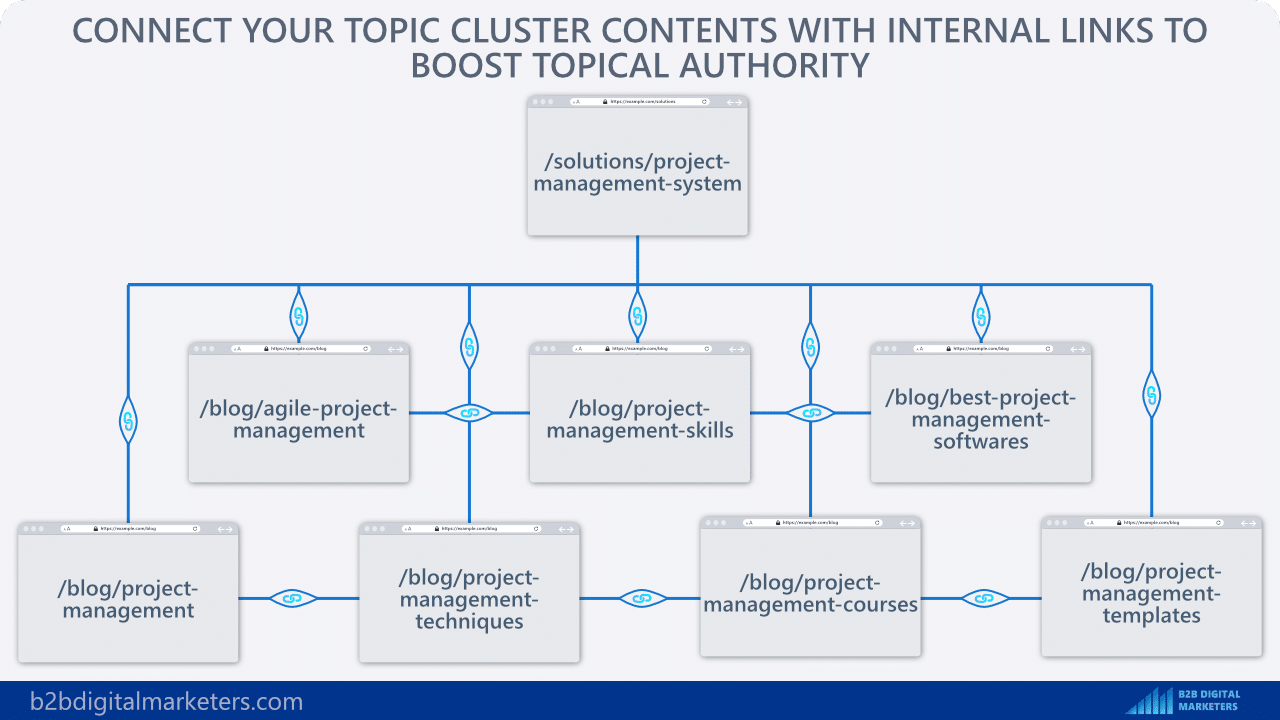
- Ensure you don’t have any broken internal links and if can also not any internal link redirects.
- Don’t have too many on-page SEO links. According to the SEMrush study, about 15% of the analyzed website had too many internal links.
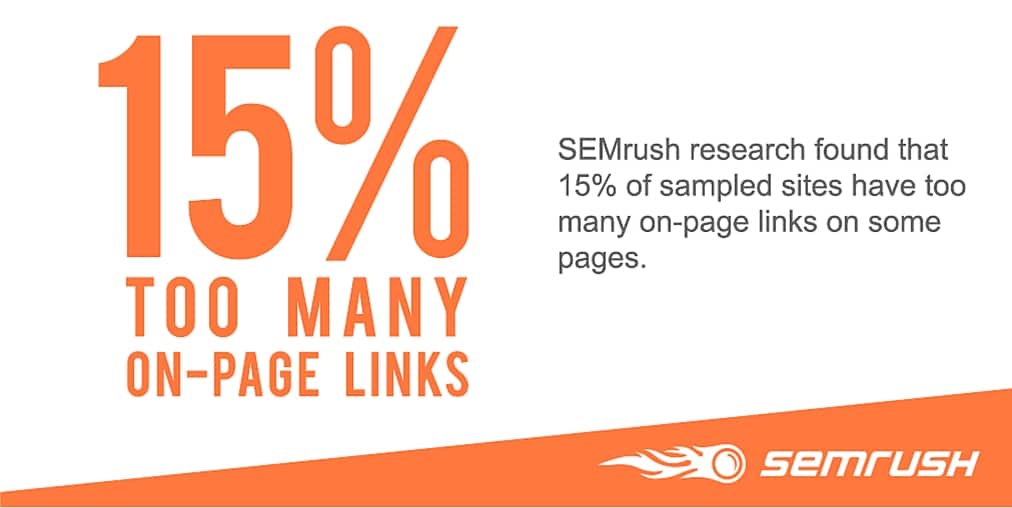
- Remove any temporary redirects.
- Add keyword-rich anchor text as well as descriptive anchor text for your internal links.
- Always add internal links from and to your new content to ensure quick indexing and ranking.
- Avoid any internal link automation. These often cause a lot of problems.
Practice #7: Keyword Placement Optimization
The next important thing on the on-page SEO checklist you should check when you are doing a B2B SEO audit is how well is the page optimized for keyword placement.
Despite improved technologies to understand the written text on a page, Google still is looking at the keywords mentioned within the content to better understand what’s the page about in order to properly index it and rank it.
As John Mueller said:
“I would recommend that if there’s something that you want to tell us that your page is about, to make that as visible as possible
So don’t just put that as a one-word mention at the bottom of your article”
With that, here are some of the keyword placement best practices:
- Add primary and if can secondary keywords in the title tag: This helps improve the relevancy of your content, CTR, and for Google to better understand what’s your page about.
- Add primary and secondary keywords in meta description: This helps improve the relevancy of your content and CTR as Google bolding keywords there.
- Add primary keyword in your URL: To make SEO URLs, I recommend only adding your primary keyword and nothing else.
- Add primary keyword in your headline: Use copywriting tricks to improve your headline, but also include your primary keyword to make your headline SEO-friendly.
- Add primary and if can secondary keywords in your featured picture: Use your primary keyword in the featured picture name and alt-text and if you can, also add secondary keywords as well.
- Add primary and one secondary keyword in the introduction or first 200 words: This will help both Google and users to understand what the page is about because as the content progresses more keywords will be included.
- Add a primary keyword if can in your subheadings: Not always but sometimes you can add your primary keyword in subheadings.
- Add primary keyword within your content: Naturally include your primary keyword in the content. Don’t worry about keyword density.
- Bolden your primary keyword: If you can bolden your primary keyword. Usually, I bolden my primary keyword when I am explaining What is the primary keyword.
- Add primary keyword in your anchor text: As explained, Google is looking at anchor text, so add your primary keyword in other of your pages.
With that, here is my keyword placement infographic.
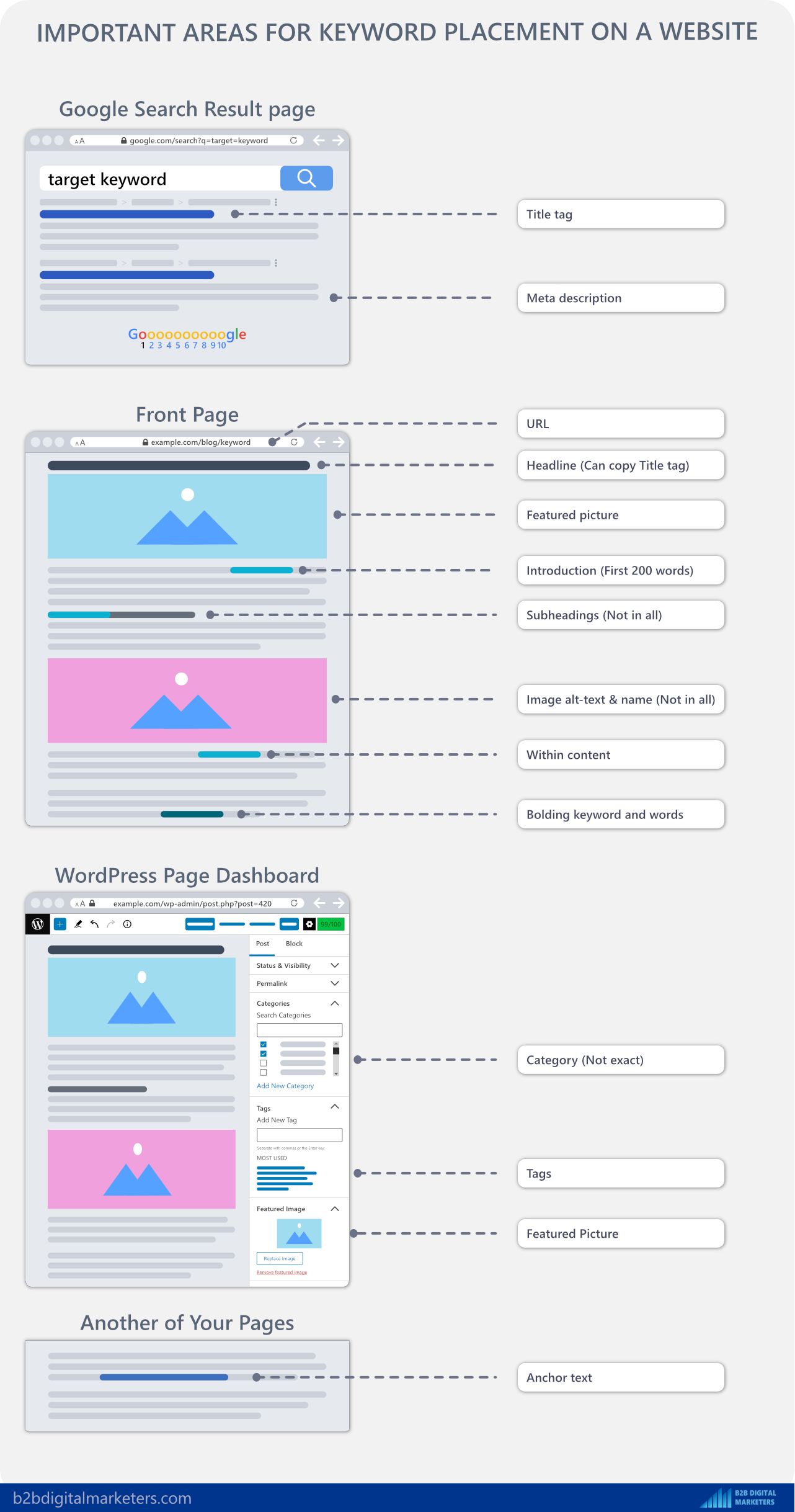
Download the full quality here.
If you are using WordPress, then check out my article Where and how to add keywords in WordPress to fully optimize your WordPress pages for SEO.
Practice #8: SEO Image Optimization
And the last on-page SEO factor I want to mention that you should check when you are doing a B2B SEO Audit is SEO Image Optimization.
By adding images to your content, you can greatly enhance the user experience, improve your conversions, help users and search engines to better understand your topic and what you are talking about and so much more.
Images make your content better. But they can also improve your SEO by driving more organic traffic from image search, attracting high-quality backlinks, and providing more information for users and search engines.
With that, here are some of the SEO image optimization best practices:
- Use web-friendly image formats: The best formats for web-friendly images are jpeg, png, webp, or svg.
- Always write unique and descriptive alt-text and name: Every picture should have a unique name and description of what’s the picture about.
- Add primary and secondary keywords in images: Include in some of your picture’s alt-text and name primary and secondary keywords.
- Keep image size below 200kbs: For optimal page speed, keep your size small. Also, WordPress automatically resizes pictures for different screens.
- Enable lazy load: To not load all the pictures at the same time to improve page speed and user experience.
- Create unique images: By creating your own and unique images you can improve user experience, quality content and get passively high-quality backlinks.
- Use image plugin: Image plugins can help you resize, compress, convert and apply other image SEO best practices.
- Add images to sitemap: This will help you to generate extra organic traffic from image search and improve your ranking.
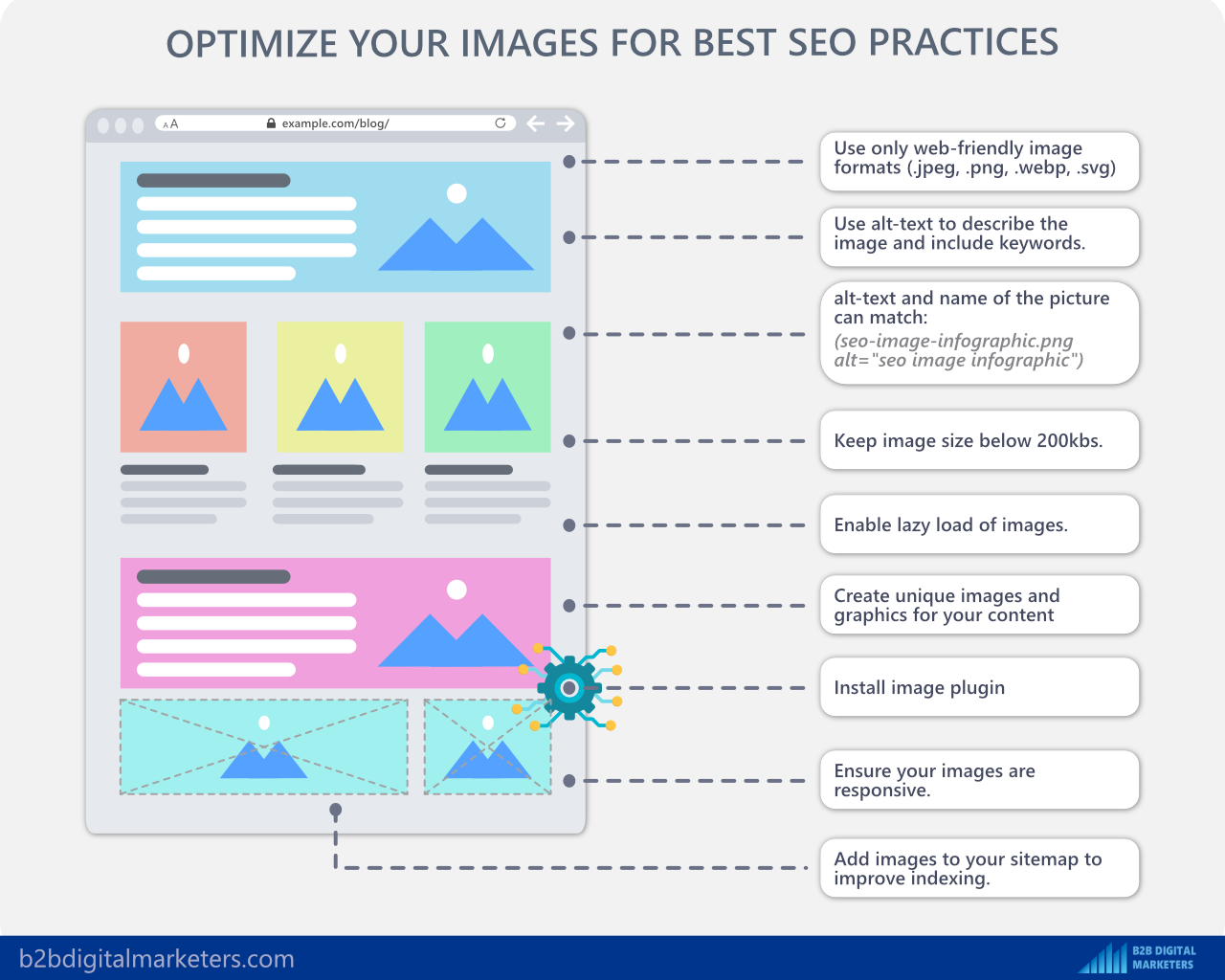
Section #4: Technical SEO Checklist
The next important section of a B2B SEO audit is to run through the Technical SEO checklist.
Now you don’t need to worry if you are not a techie person, as if you are using WordPress, Shopify, HubSpot, or other popular CMS, then most of the hardcore technical optimization is done by the CMS and themes developers.
And if you are using WordPress, then SEO-friendly themes with great technical aspects I can recommend you are:
- Avada (Best in General)
- GeneretePress (Best for Affiliates)
- Elementor (Best for Business Website)
With that, there are still some important Technical SEO best practices that you need to handle yourself, so here they are:
Practice #9: SEO website Architecture
The first technical SEO aspect that you should check when you are doing a B2B SEO audit is whether a website implemented a proper SEO site architecture.
SEO website architecture is an organization of your website content into semantically distinctive categories based on the purpose of the content. The content should be interconnected with internal links between each other in order to create a semantic relationship between those pages which helps users and search engines to better understand the purpose and type of the content.
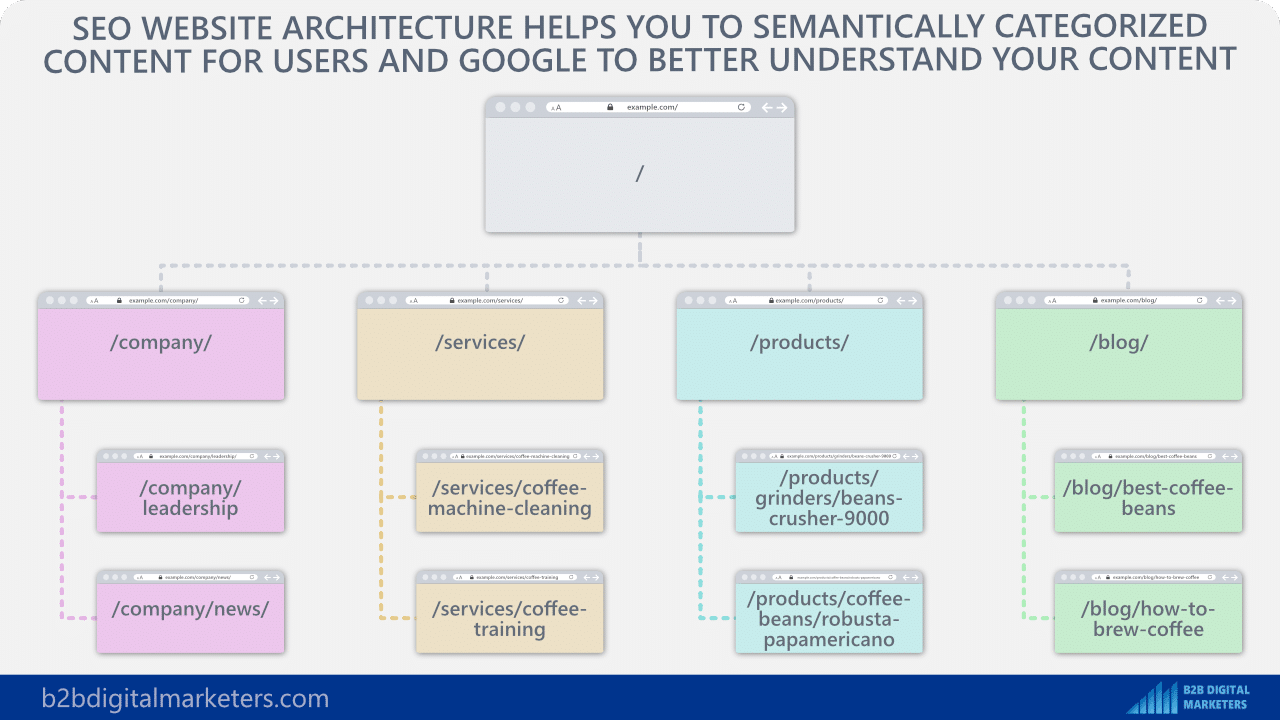
This helps create clean website architecture that can be easily planned, your content easily organized, and also it can be easily tracked to see the best performing categories in terms of revenues, organic traffic, etc.
It also helps Google to better understand your content as said by John Mueller:
On the other hand, kind of more the top-down approach or pyramid structure helps us a lot more to understand the context of individual pages within the site.
So, in particular, if we know this category is associated with these other subcategories then that’s a clear connection that we have between those parts.
And that definitely helps us to understand how these things are connected, how they work together a little bit better.
With that, here are some of the best practices for SEO website architecture:
- Create category pages to lower click depth and help Google and users to better understand what’s your website about.
- Link from your navigation menu to your category pages such as blog, services, products, solutions, etc.
- Create content hub pages for your blog posts.
- Include internal links wherever it makes sense. Regardless they are linking across categories, content hubs, etc.
- Keep your page depth between 1-3. Unless you are in an eCommerce store with 1,000+ pages, then you can have click depth up to 5 to ensure you have not cluttered too many categories and subcategories on one page.
Just FYI, this is an example of what Content Hub for SEO could look like:
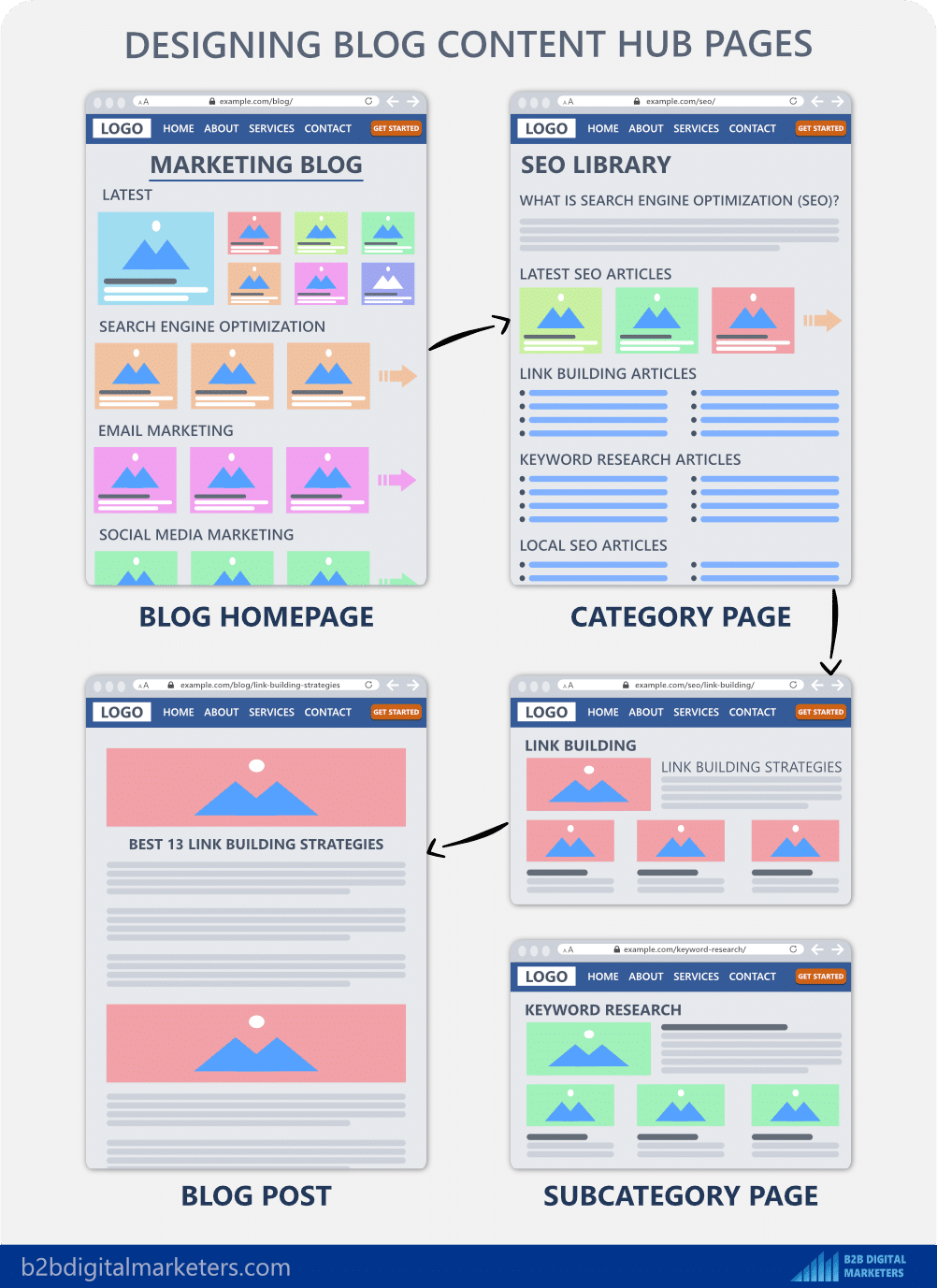
Learn more about SEO Cross Linking.
Practice #10: Core Web Vitals
The next important aspect of the technical SEO checklist that you should check when you are doing a B2B SEO audit is the website’s core web vitals.
Core Web Vitals are a set of metrics used by Google to measure website performance in terms of responsiveness and page speed to better understand the page experience and whether it can provide the optimal user experience.

Core Web Vitals are also a ranking factor. Therefore, it’s important to monitor them to ensure you are not losing any ranking due to poor performance.
With that, to monitor your core web vitals, you can use Google Search Console in the “Core Web Vitals” report.

And also, in the “Page experience” report.

Both of these reports give you the performance of your pages based on user data. That’s why if you don’t have enough website traffic, it will tell you don’t enough data.
So, if that’s the case to measure your core web vitals you can use page speed performance tools such as PageSpeed Insights from Google or GTMetrix. If you are using tools to measure your website performance, I recommend taking at least 2-3 pages from every website category to get a better picture of your website performance.
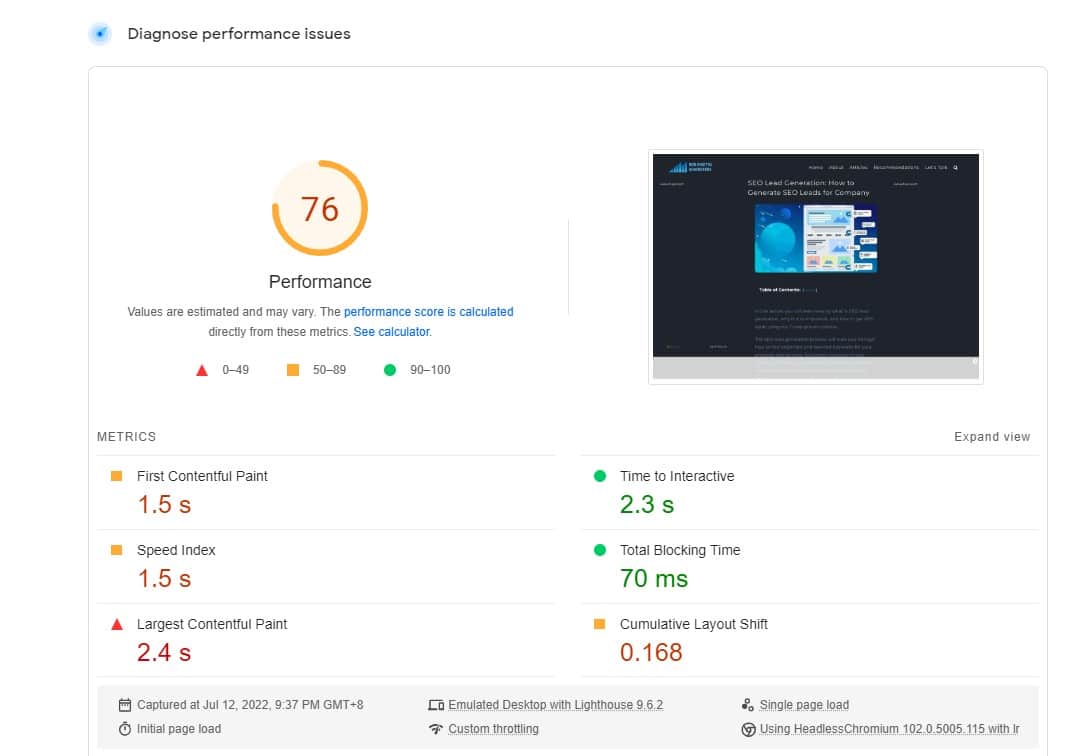
Now, because core web vitals are specifically targeting the page speed, luckily for us commoners and not developers, we don’t need to do the hard stuff, at least for most of the time.
So, with that, here are some of the core web vitals best practices for not techie people that are easy to implement:
- Implement CDN, you can use Cloudflare as a free option or use their premium version.
- Use premium themes. As I have already recommended, try Avada, GeneratePress, or Elementor.
- Definitely use better hosting. Using hosting like SiteGround, Digital Ocean or Ezoic can greatly boost your website performance.
- Implement some of the image SEO best practices as already described.
Practice #11: Orphan Pages
And the last technical SEO aspect that I want to mention that you should check when doing a B2B SEO audit is to look for orphan pages.
Orphan pages are pages without any internal links pointing to them from any other web page or section of a website, which makes the page inaccessible for website users by simply clicking through your website and even for crawlers as well.
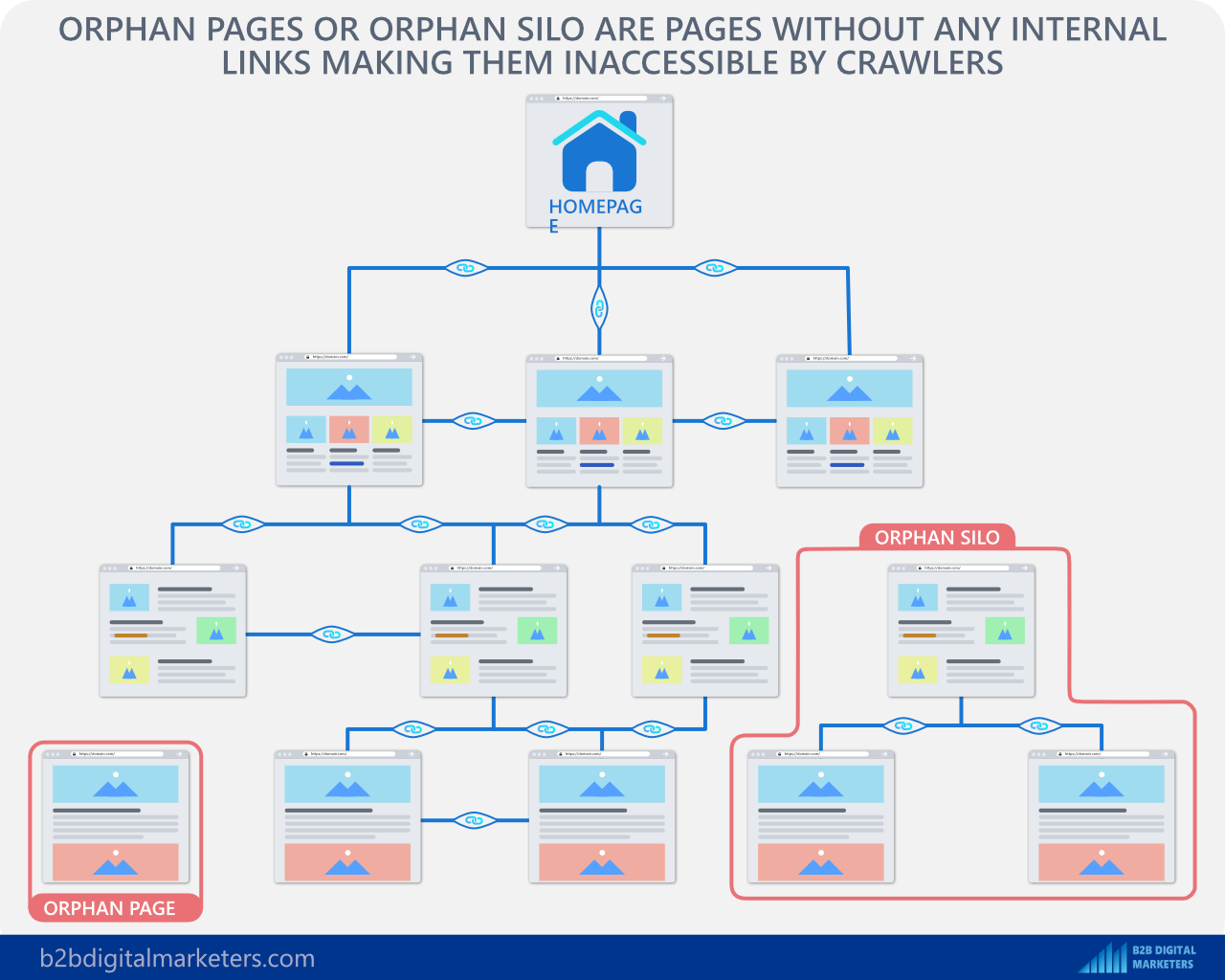
Usually, these pages are rarely to be indexed by search engines because they can’t be found by search engine crawlers as the prior way to discover web pages on a website is by crawling links.
However, even if they are indexed within the SERP, their ranking will often be very poor, and they can be lowering your average ranking position and even damage your overall ranking.
Thus, you want to know about these pages in order to make a decision whether to create internal links to the page, delete or remove them from the index.
Of course, not every page is meant to be indexed and often purposely made orphan pages such as landing pages for Google adverting or Facebook advertising are meant to be inaccessible from within the website.
Section #5: Off-Page SEO Checklist
Our next focus during the B2B SEO audit will be on the off-page SEO Checklist to better understand the online reputation of the website, find any opportunities to grow organic traffic and ranking, and improve the user perception of a site’s popularity.
Off-site SEO ranking factors are one of the most important that helps you to rank for more competitive keywords in your niche/industry, and increase organic traffic, and lead generation.
They are also arguably one of the hardest to do, as they aren’t done on your website but on other webmasters and companies’ websites and even on your competitors’ websites.
With that being said, there is a lot more to off-page SEO so I again recommend you to check out my off-page SEO guide and my off-page SEO activities list as well:
However, here are some of the important off-page SEO best practices I recommend you follow:
Practice #12: Social Fortress
The first thing on the off-page SEO checklist you should check is whether you have to build your social fortress.
Building a social fortress is a process of registering your business on social media directories with relevant, accurate, and consistent information with a link to your and from your website to create a connection between them. This further helps search engines to verify your business and increase trust for both search engines and users.

Building a social fortress is an important strategy that impacts your online reputation and helps you to improve your digital presence and drive better results with your digital marketing.
For example, I have created a business profile and registered my website on LinkedIn.
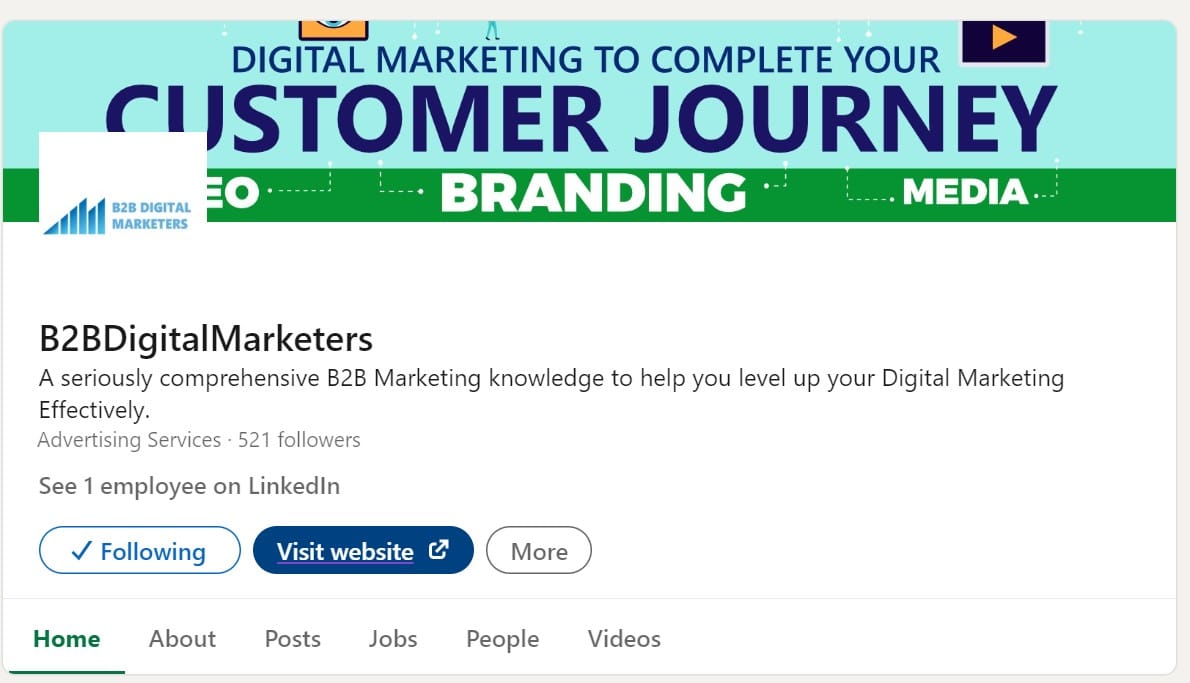
And then I have done the same for my YouTube Channel, where I link to my website as well.
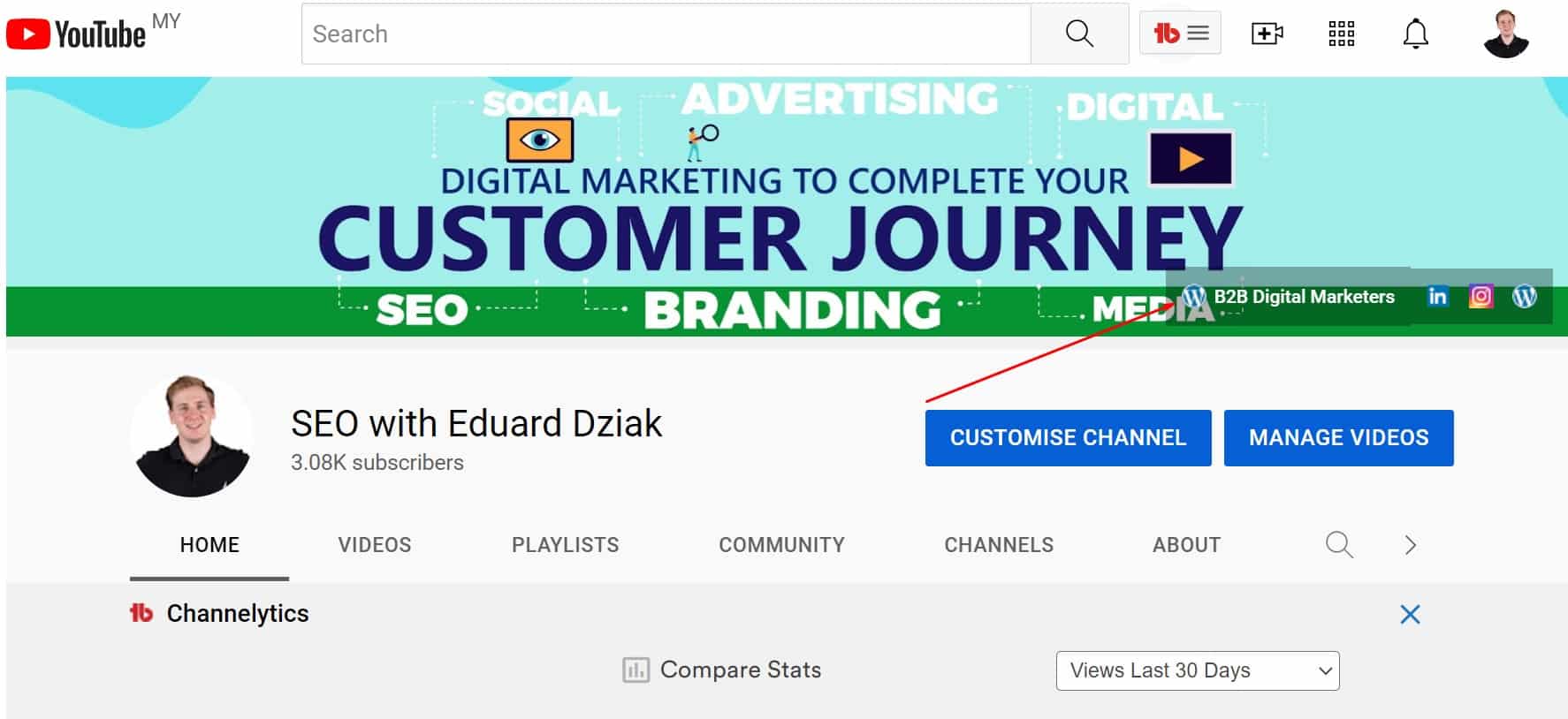
Building a social fortress is an important part of your online reputation as it will help you to create a digital footprint that helps search engines to get more information about your business and validate if you are a real business.
Because at the beginning when you are starting, search engines like Google have very little information about who you are, and what’s your business about. Therefore, they cannot trust if you are a good source of information and if search engines can send users to your website.
And by creating social media and registering on directories and job sites, especially on more famous ones like:
- YouTube
- Jobstreet
You essential to create a bigger digital footprint and more data sources for them to verify if you are a real business.
Practice #13: Digital PR
The next technique on the off-page SEO checklist for the B2B SEO audit is Digital PR.
Digital PR is essential for every business regardless of whether they are in B2C or B2B if they want to rank for highly competitive keywords, bring high organic traffic, and generate massive revenue from SEO.
Digital PR links are the highest tier and highest organic quality backlinks that Google is talking about, and you can scale these links to even hundreds per day and Google will not penalize you for them because these are the links that they call organic backlinks and want you to build.
In fact, John Mueller said about Digit PR:

Because as Google says about getting backlinks,
The best way to get other sites to create high-quality, relevant links to yours is to create unique, relevant content that can naturally gain popularity in the Internet community.
And then once you build something amazing, you can do outreach to let know the internet community and journalists about your new content, research, etc. (Learn more about niche relevant backlinks)
This was praised by John Mueller as well:
From our point of view, it’s fine to contact people and tell them it’s like by the way, I have this great content, and… maybe it’s something that you would appreciate for your website.
Lastly what I want to show you is Google Quality Rater Guidelines where they specifically stated if reputable news articles cited you, then users can trust the website. In this case, it is about Clinic, but this applies to every type of business regardless of its nature or industry.
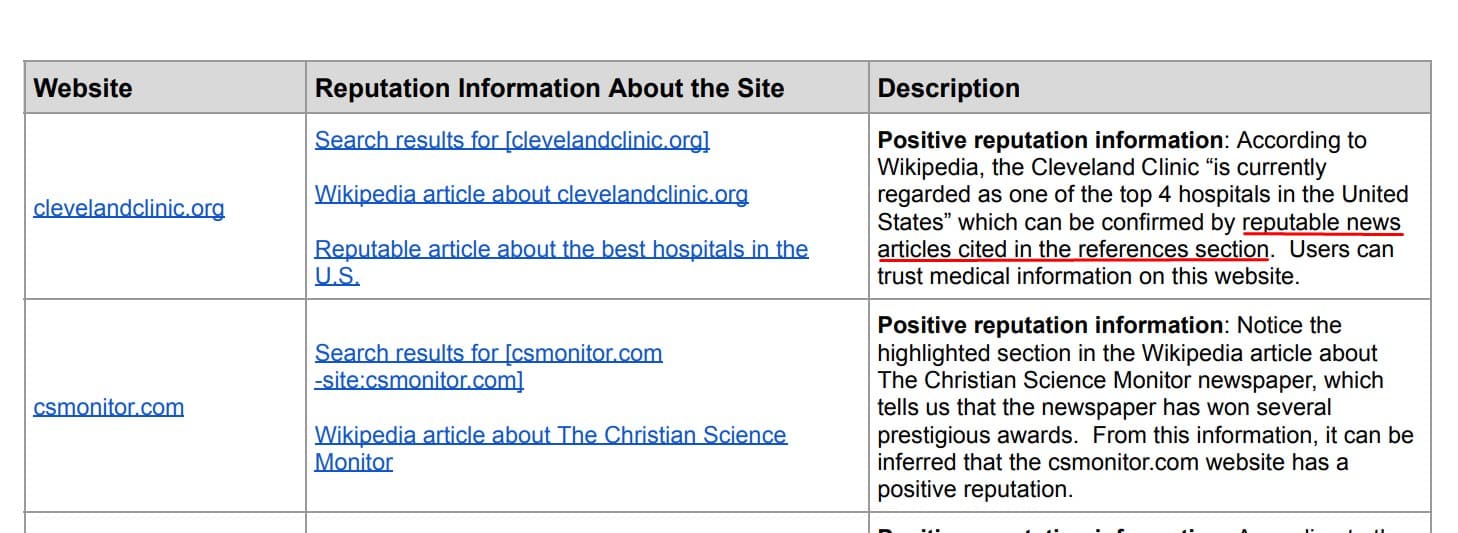
Therefore, doing digital PR should be your priority before any link building campaign begins because not only, they are safe, but also highly valuable for your SEO.
Practice #14: Link Building Strategies
And the last part of the off-page SEO checklist for the B2B SEO audit is to start with link building strategies to further grow your website authority.
For Google and other search engines, backlinks are one of the top-ranking factors when they are assessing your web pages for ranking, therefore without backlinks, you cannot rank.
Therefore, first, you should focus on building links to your topic clusters in order to improve your topical authority and start improving your ranking and start ranking your money pages to bring leads for your business.
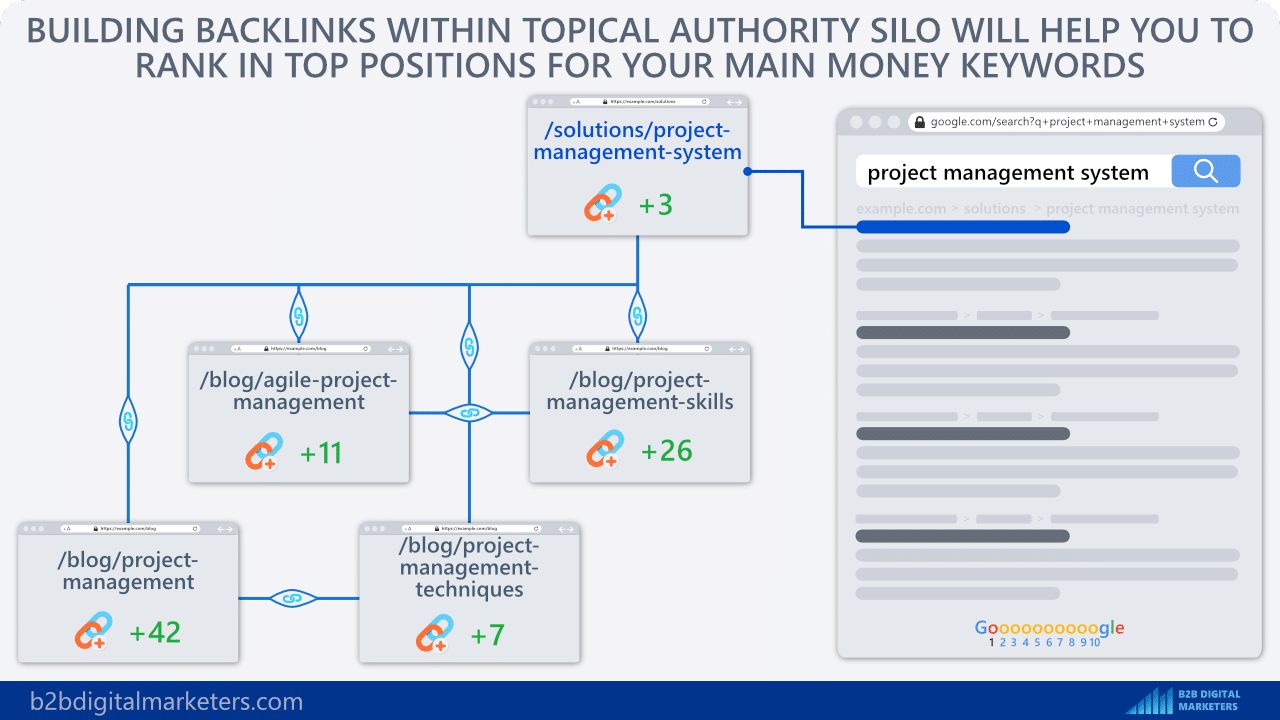
Then, of course, you will want to build backlinks to your low competition keywords that are ranking in positions 5-20 to get a quick and easy boost in the overall ranking and drive organic traffic.
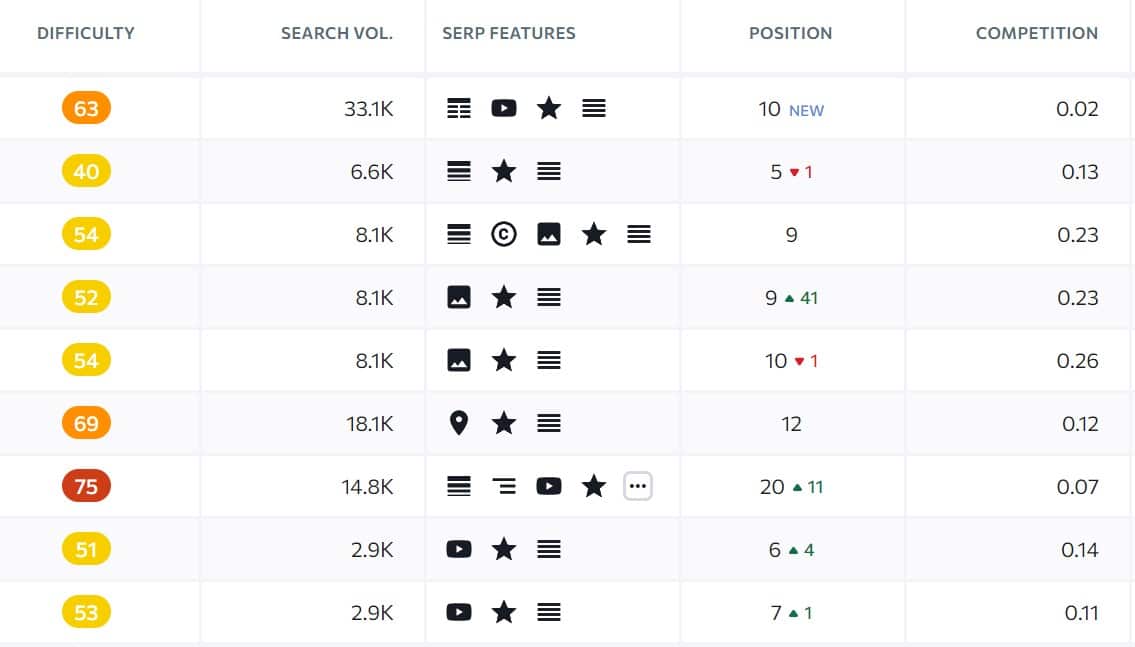
With that here is a list of beginner-friendly link building strategies:
- HARO link building:
- Resource page link building:
- Guest Posting:
- Tiered Link Building
- Link Insertion
- Niche Edits
- Podcast Interview
- Link Exchange
- Link roundups:
- Create Linkable Assets:
- Create Partner Section to Exchange Backlinks:
Lastly what I want to mention is to be careful about the anchor text backlinks ratio you build. One of the biggest link building mistakes and the fasters way to get penalized is to build only keyword-rich anchor text backlinks.
That’s why you should follow the optimal anchor text ratio when building backlinks. Here is mine:
- 50% Branded, personal & URL anchor text
- 20% niche and general relevant anchor text
- 20% miscellaneous anchor text
- 10% target, synonym, and long-tail keywords anchor text.
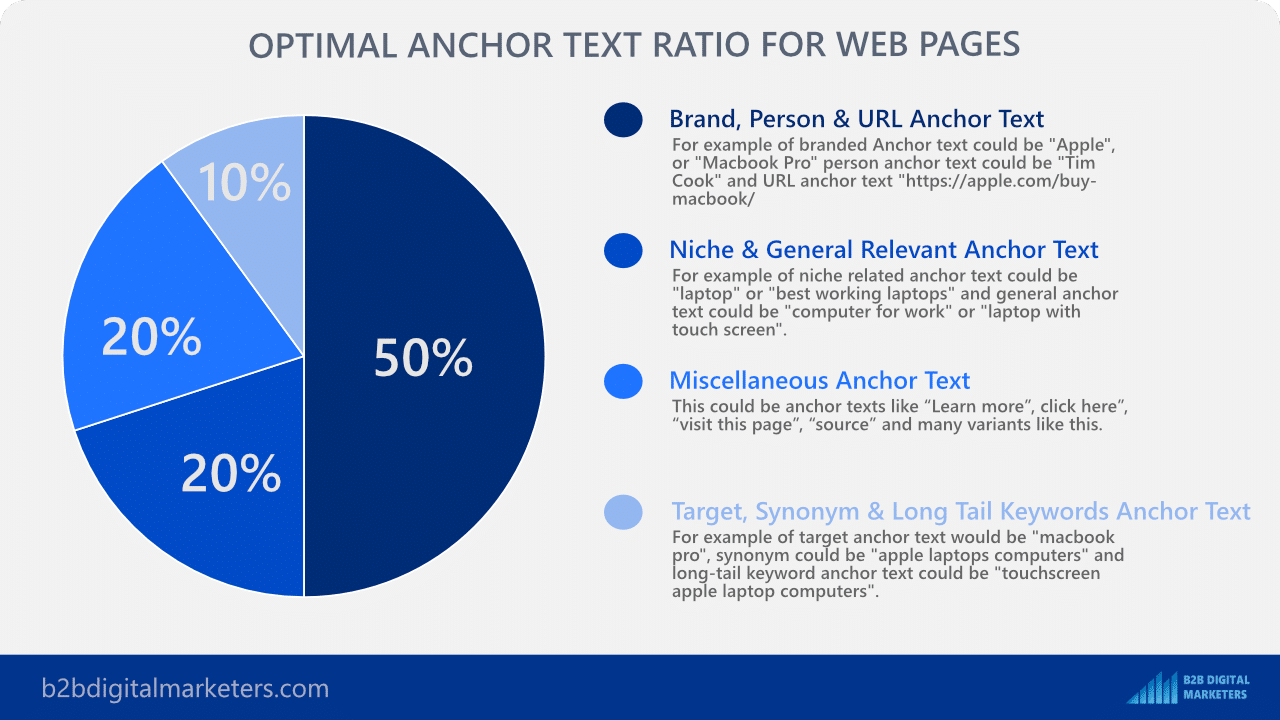
So, when you are building backlinks for your website, be careful to avoid these common pitfalls so you don’t get penalized and get the most out of your link building campaign.
Section #6: Local SEO
And the last section of the SEO checklist for the B2B SEO audit is to check the Local SEO checklist.
Regardless you are selling global or local, Local SEO should be a big part of your SEO strategy as 46% of Google searches are for local businesses.
And most likely your B2B buyers are doing local searches to find your products or services as well.
On top of that, it’s much easier to compete in Local search for your target keywords and from my experience leads from Local SEO are of better quality.
Therefore, whether you are a local or global business, your B2B target audience is searching locally for your products or services.
With that, as I said, when you are doing a B2B SEO audit and checking for local SEO, there is a lot more to it, than I will tell you here. However, I am going to share with you the two most important local SEO best practices:
Practice #15: Local Keywords
The first thing on the Local SEO Checklist for B2B SEO audit is to check for local keywords on the website.
If you are targeting local areas whether they are countries, regions, cities, or part of cities, you will need to include it on your websites such as in your title tag, headline, content, images, and footer for Google easily understand what area you are trying to target.
Remember, as John Mueller said, if there is something you really want to tell them about the page, make it as visible as possible.
And if you are targeting certain locations, having local keywords will help you with that.
For example, Digital Piloto is targeting California state to offer their SEO services, so they create a page to target the location keyword “seo services in California”
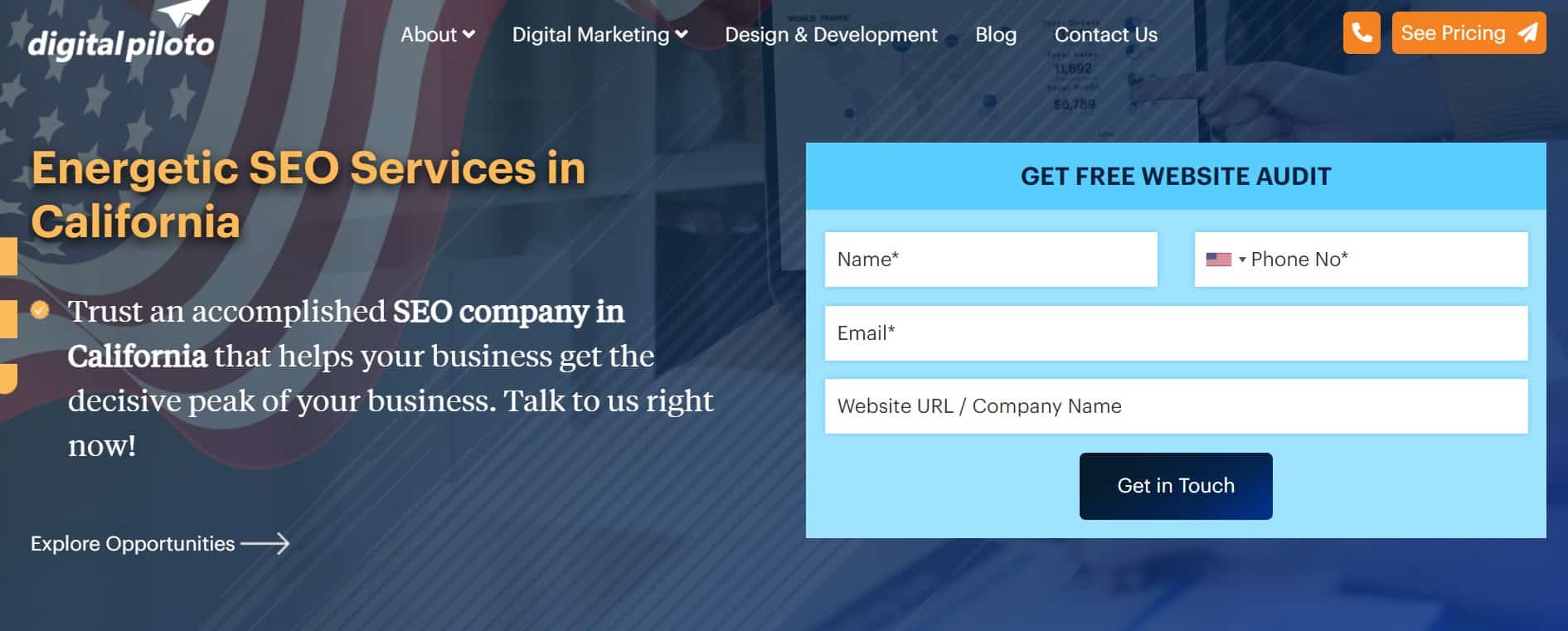
Or Complete Controller is targeting the local keyword “bookkeeping services in New York”.
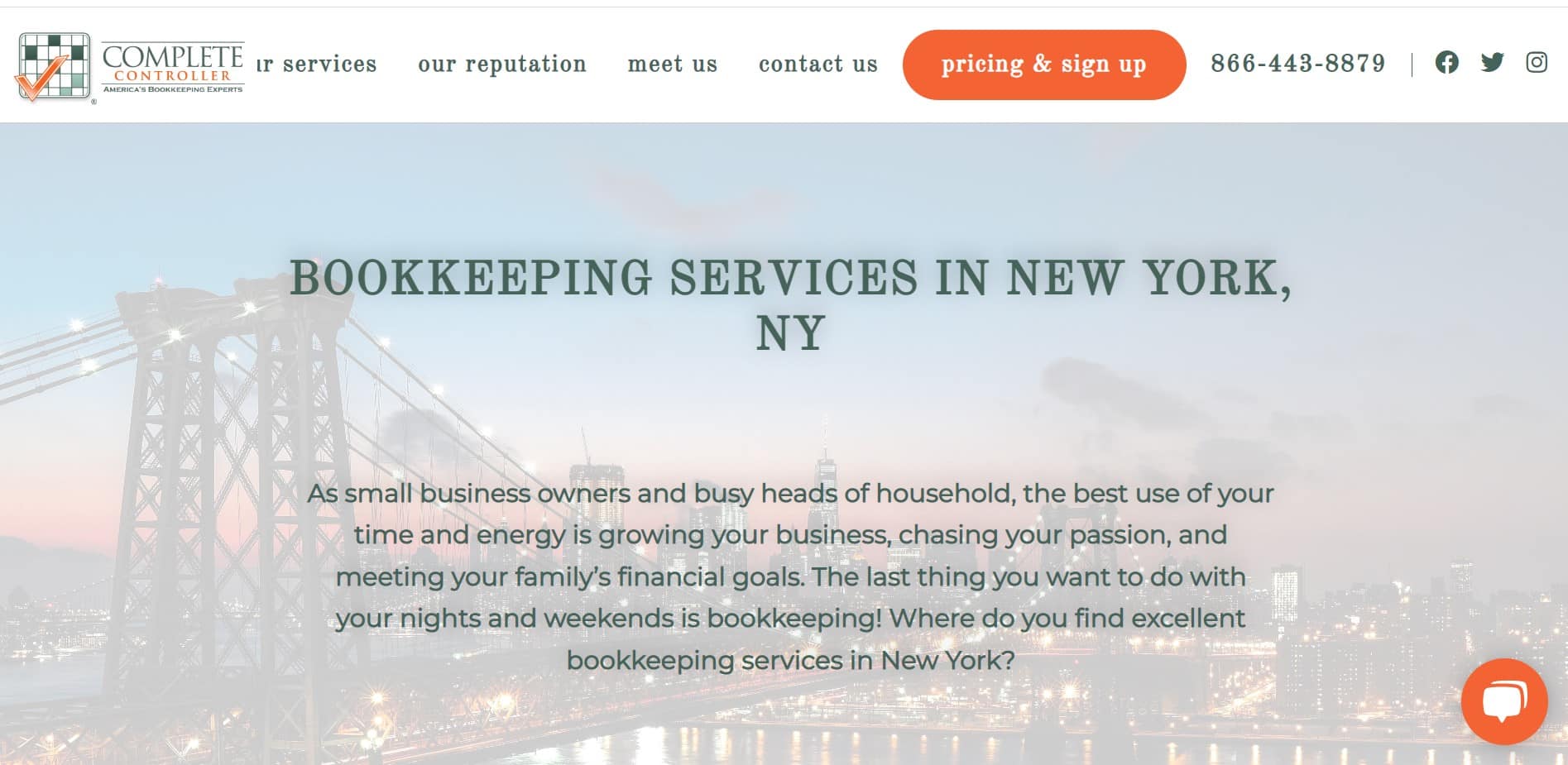
With that, targeting local keywords is just as same as you are targeting normal keywords, only you are creating more localized content in terms of writing and pictures.
For example, if you are targeting companies in New York, having a picture of New York City would be more suitable just as Complete Controller did rather than a picture of any other city.
Also, most of the keyword research tools have the option to search in their keyword database that is specific to your target location.
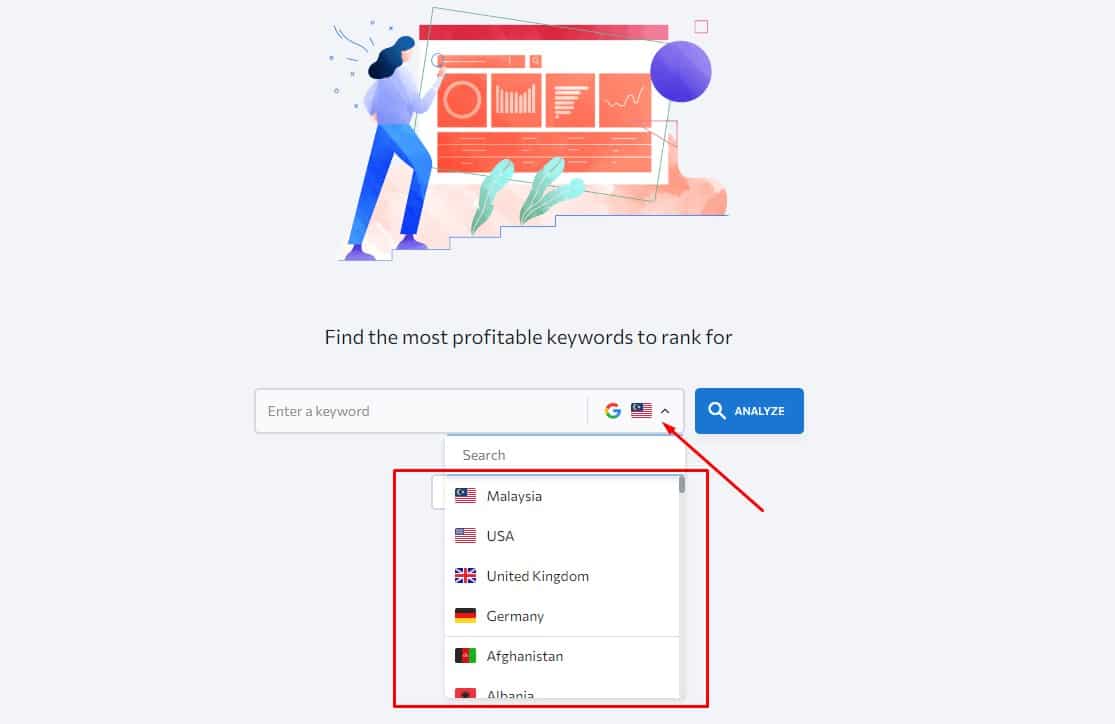
This will help you to find the most related location-based keywords and get important information to prepare your content plan to target those local keywords.

Definitely one of the best SEO lead generation techniques is targeting local keywords, so make sure you use it!
Practice #16: Consistent Citations
And the last practice I want to mention in this B2B SEO audit is to check the consistency of the business citations across the internet.
In fact, the consistency of citations has been seen as one of the most important Google Local SEO ranking factors.
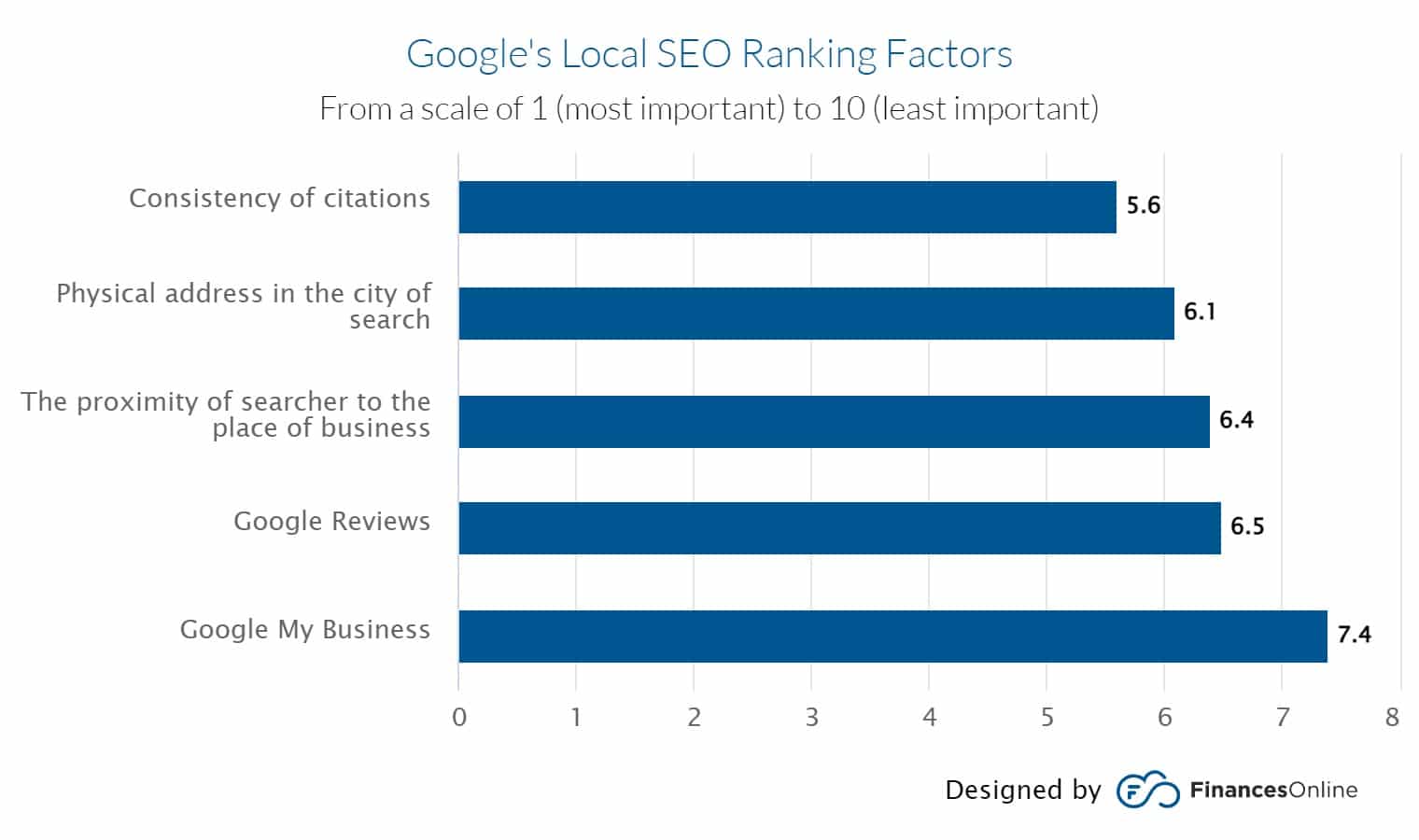
And Local Citations are being seen as one of the most important Local SEO techniques by SEO experts in order to improve local ranking and bring more local organic traffic.
Also, inconsistent citations are being seen as the #1 local SEO issue affecting local ranking.

And directories and business listing websites are used by Google as a data source to determine the location in which a business operates.
Therefore, when you are doing a B2B SEO audit you should make sure all your citations, directories, and business listings are having the exact same NAP information. NAP – Name of a Business, Address, Phone Number.
And to find all your business citations, just Google your business name and go through the results.
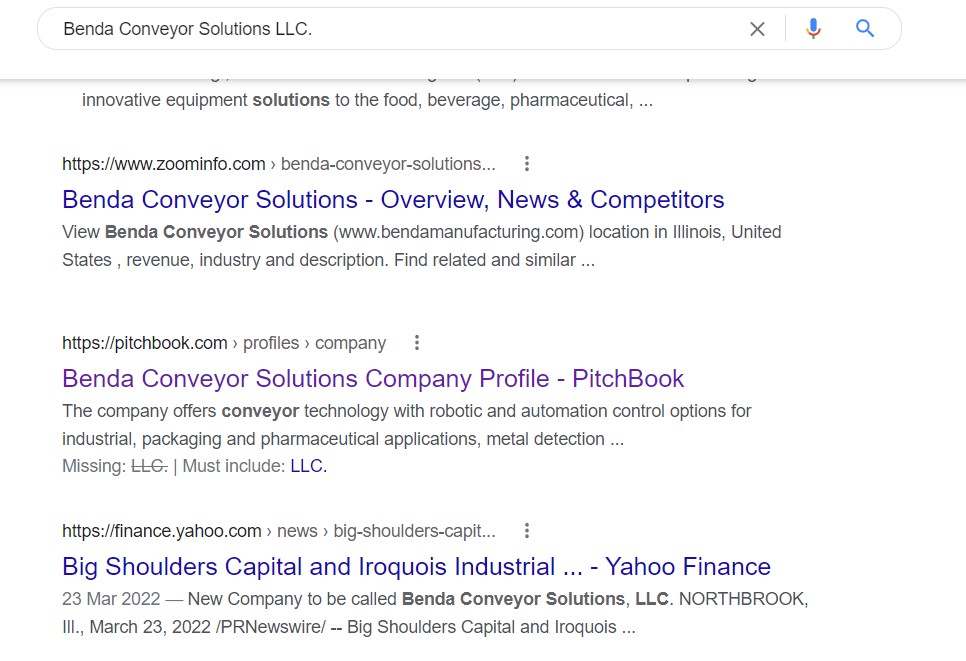
You can also check your Backlink profile using tools such as SE Ranking Backlink Checker to find more citations as often they link to the website as well.

Once you have found any inconsistent citations, then I recommend copying exactly your NAP information from Google Business Profile listings.
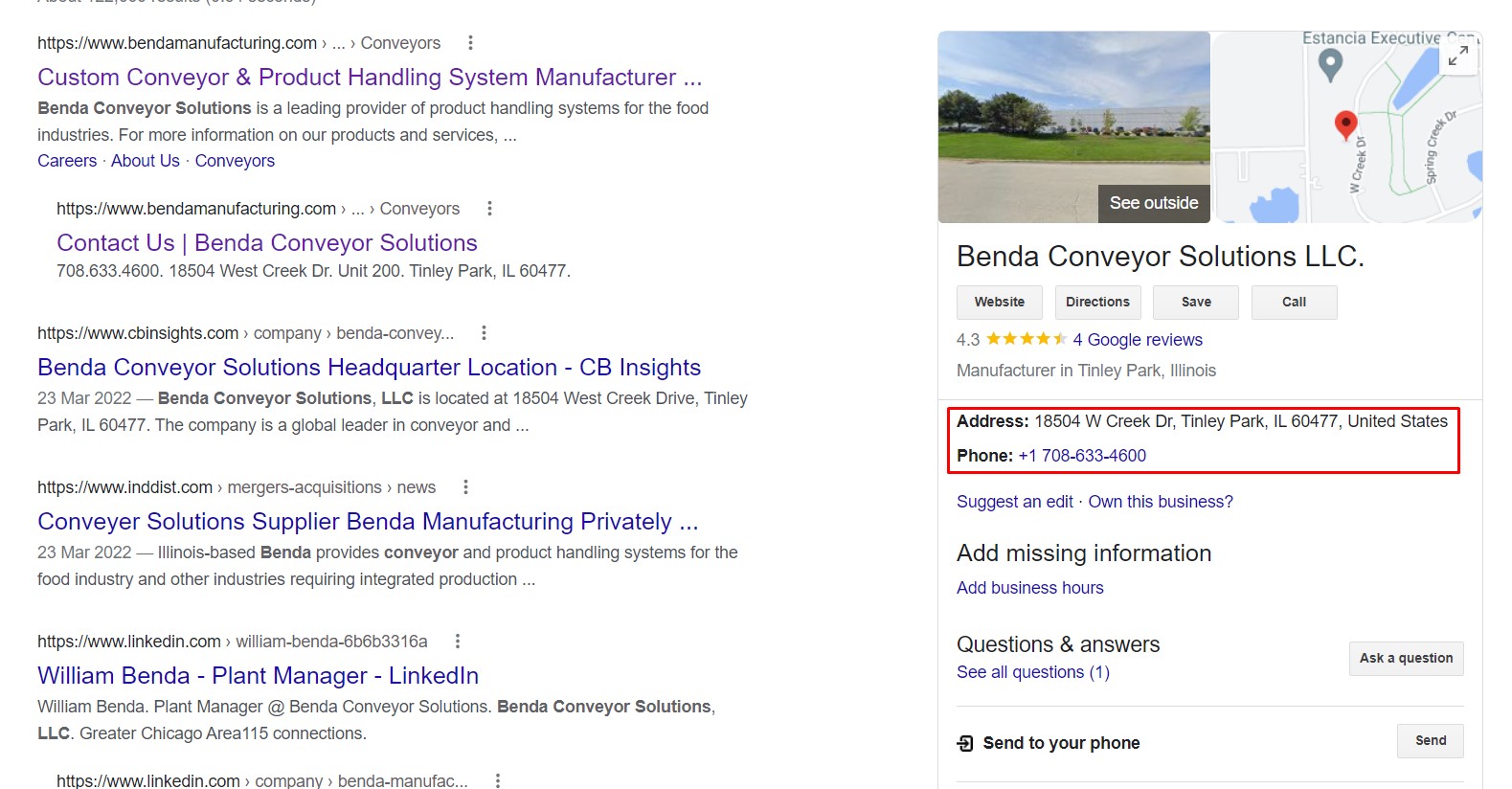
And then do the same for all your directories and business listings.

You should also include your NAP information on your contact page and in your footer. Learn more about footer SEO best practices.
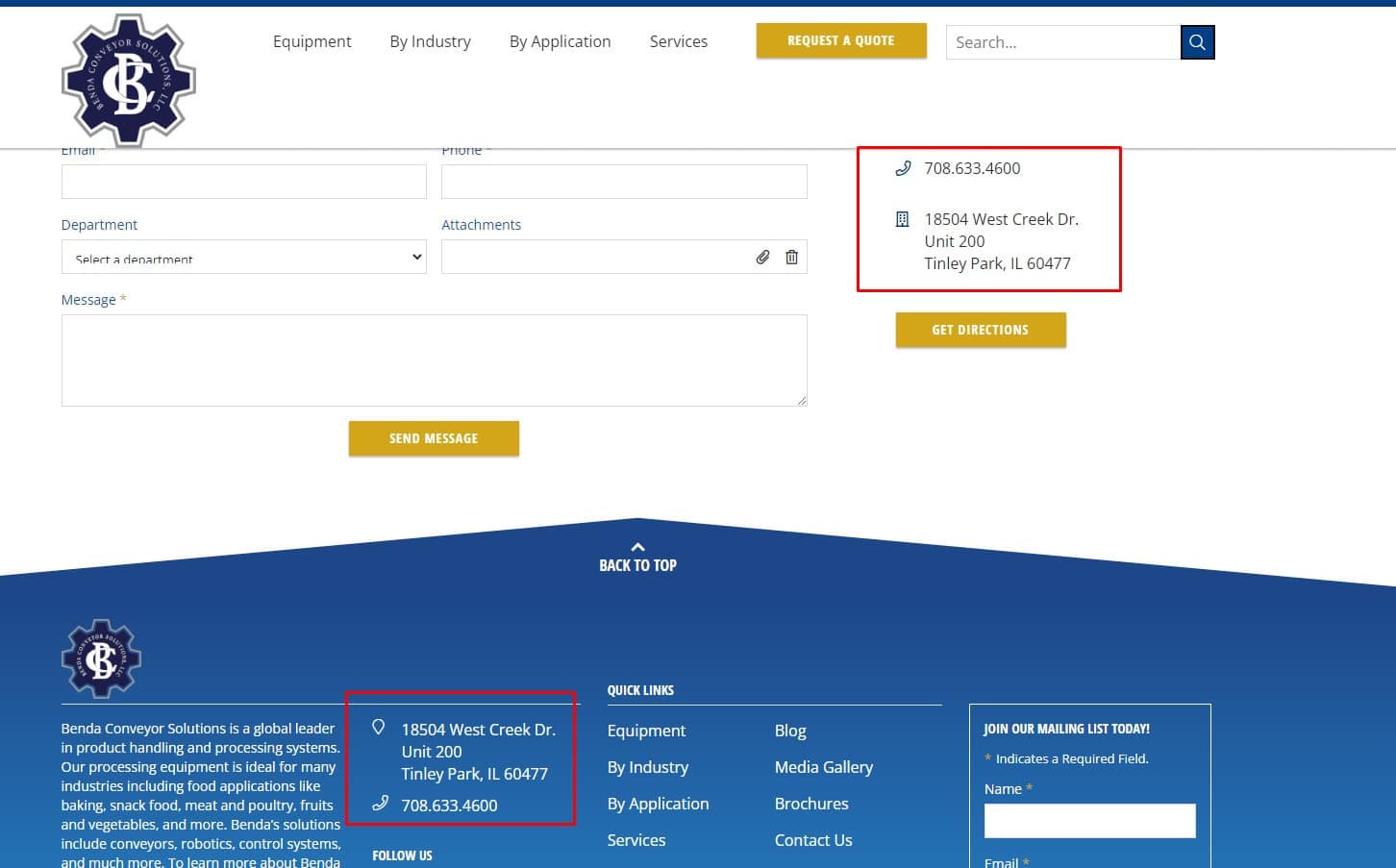
And just like this, you will want to make sure all your citations are being updated with your current NAP information. If you are medical specialist, check out my local SEO for doctors.
Final Advice
As I said, this article should work as a guideline for you when you are doing a B2B SEO audit and you should make sure, you check every section for all the B2B SEO best practices in order to have the best results.
As I said, here I have only mentioned a couple of best practices for every section but there are a lot more, so when you are going through the B2B SEO audit, section by section, make sure you have a related SEO checklist for that particular section with you to ensure you don’t miss anything.
Anyway, did you enjoy this article? Have you learned anything new? Is there something you would add to this article? Let me know on my YouTube channel, CAU!
Related Articles:
- White Hat SEO: Best Techniques & Tactics in Step-by-Step Guide
- 5 Easy Ways How to Get Google Business Profile Backlinks (AKA Google My Business)
- How To Check Website Position in Google
- How to Create SEO URLs for Your Website [15 Best Practices]
- Backlink Audit: Ultimate Guide
- B2B Blogging: Best Practices, Tips and Tricks
- What is CTR Manipulation and How to Increase CTR in SEO
Also, check out our SEO hub page to find all our SEO resources.
Disclaimer
Some of my links are affiliate links, which means if you purchase something, I might get a small commission as a reward for reference. Of course, I am actively using all these services and products, and I only affiliate products or services I have full trust in their quality!








